Male Urethra Problems: Understanding Urethral Disorders, Urethritis, and Urethral Stricture
What are the common male urethra problems. How are urethral disorders diagnosed and treated. What causes urethritis and urethral stricture. What are the symptoms of urethral stricture. How is urethral stricture managed.
Understanding the Male Urethra and Its Function
The male urethra is a crucial component of the urinary system, serving as the conduit for urine to exit the body from the bladder. It’s important to understand its anatomy and function to appreciate the impact of various urethral disorders.
Anatomy of the Male Urethra
The male urethra is a tube-like structure that extends from the bladder to the tip of the penis. On average, it measures about 20 centimeters (8 inches) in length. The urethra is surrounded by a spongy tissue called the corpus spongiosum, which plays a role in both urination and ejaculation.
The urethra can be divided into several sections:
- Prostatic urethra: Passes through the prostate gland
- Membranous urethra: A short segment that passes through the pelvic floor muscles
- Bulbar urethra: Located in the bulb of the penis
- Penile urethra: Runs through the shaft of the penis
- Fossa navicularis: The widened portion near the external urethral meatus (opening)
Function of the Urethra
The primary function of the urethra is to transport urine from the bladder to the outside of the body. In males, it also serves as a passageway for semen during ejaculation. The urethra contains sphincter muscles that help control the flow of urine, allowing for voluntary urination.

Common Urethral Disorders in Men
Several conditions can affect the male urethra, leading to discomfort, pain, and urinary problems. Understanding these disorders is crucial for proper diagnosis and treatment.
Urethritis: Inflammation of the Urethra
Urethritis is the inflammation of the urethra, often caused by bacterial or viral infections. It can lead to symptoms such as:
- Burning sensation during urination
- Frequent urge to urinate
- Discharge from the penis
- Redness or swelling at the urethral opening
Urethritis can be classified as gonococcal (caused by the bacterium Neisseria gonorrhoeae) or non-gonococcal (caused by other pathogens or irritants). Treatment typically involves antibiotics or antiviral medications, depending on the underlying cause.
Urethral Stricture: Narrowing of the Urethra
Urethral stricture is a condition characterized by the narrowing of the urethra due to scar tissue formation. This can significantly impair urine flow and lead to various complications.
Urethral strictures are classified based on their location:

- Anterior urethral strictures: Occur in the portion of the urethra from the tip of the penis to the bulbar urethra
- Posterior urethral strictures: Develop in the section of the urethra closest to the bladder
Causes and Risk Factors for Urethral Stricture
Understanding the causes and risk factors associated with urethral stricture can help in prevention and early detection of this condition.
Common Causes of Urethral Stricture
Urethral stricture can result from various factors, including:
- Trauma or injury to the urethra or surrounding areas
- Infections, particularly sexually transmitted infections
- Prolonged catheterization
- Previous urethral surgeries or procedures
- Radiation therapy for pelvic cancers
- Benign prostatic hyperplasia (BPH) or prostate surgery
Risk Factors for Developing Urethral Stricture
Certain factors may increase the likelihood of developing urethral stricture:
- Male gender (urethral strictures are much more common in men)
- Advanced age
- History of urethral infections or sexually transmitted diseases
- Engaging in high-risk sexual behaviors
- Occupations or activities with a higher risk of pelvic or genital injuries
Recognizing the Symptoms of Urethral Stricture
Identifying the symptoms of urethral stricture is crucial for early diagnosis and treatment. The signs can vary in severity and may develop gradually over time.

Common Symptoms of Urethral Stricture
Individuals with urethral stricture may experience the following symptoms:
- Weak or decreased urine stream
- Difficulty starting urination (hesitancy)
- Frequent urination, especially at night
- Feeling of incomplete bladder emptying
- Pain or burning sensation during urination
- Spraying or splitting of the urine stream
- Urinary tract infections
- Blood in the urine or semen
- Swelling of the penis
- Discharge from the urethra
When to Seek Medical Attention
If you experience any of the above symptoms, especially if they persist or worsen over time, it’s important to consult a healthcare provider. Early detection and treatment can prevent complications and improve outcomes.
Diagnosis of Urethral Stricture
Accurate diagnosis of urethral stricture is essential for determining the most appropriate treatment plan. Healthcare providers use various methods to assess the presence and severity of urethral strictures.
Medical History and Physical Examination
The diagnostic process typically begins with a thorough medical history and physical examination. The healthcare provider will inquire about symptoms, past urological procedures, injuries, or infections. A physical exam may include an assessment of the genitalia and a digital rectal examination to evaluate the prostate.

Diagnostic Tests for Urethral Stricture
Several diagnostic tests may be employed to confirm the presence of a urethral stricture and determine its location and extent:
- Uroflowmetry: Measures the rate and volume of urine flow
- Retrograde urethrogram: An X-ray of the urethra using contrast dye
- Voiding cystourethrogram: An X-ray that visualizes the bladder and urethra during urination
- Urethroscopy: A procedure that uses a small camera to examine the inside of the urethra
- Ultrasound: Can help visualize the urethra and surrounding tissues
Treatment Options for Urethral Stricture
The treatment of urethral stricture aims to restore normal urinary function and prevent complications. The choice of treatment depends on the location, length, and severity of the stricture.
Non-Surgical Treatments
For minor strictures, non-surgical options may be considered:
- Urethral dilation: Gradually stretching the urethra using dilators
- Urethral stents: Temporary or permanent devices to keep the urethra open
- Intermittent self-catheterization: Regularly inserting a catheter to maintain urethral patency
Surgical Interventions
More severe or recurrent strictures may require surgical treatment:

- Internal urethrotomy: A minimally invasive procedure to cut the stricture
- Urethroplasty: Open surgery to reconstruct the urethra
- Buccal mucosal graft: Using tissue from the inner cheek to repair the urethra
- Perineal urethrostomy: Creating a new urinary opening in severe cases
Preventing Urethral Disorders and Maintaining Urethral Health
While not all urethral disorders can be prevented, there are steps men can take to reduce their risk and maintain urethral health.
Lifestyle Modifications for Urethral Health
Consider adopting these habits to promote urethral health:
- Practice good hygiene, especially in the genital area
- Stay hydrated to maintain regular urine flow
- Urinate when you feel the urge, avoiding prolonged retention
- Engage in safe sexual practices to prevent sexually transmitted infections
- Avoid activities that may cause genital or pelvic trauma
Regular Check-ups and Screenings
Regular urological check-ups can help detect and address potential issues early. Men should discuss with their healthcare providers about appropriate screening schedules, especially if they have risk factors for urethral disorders.

Living with Urethral Stricture: Long-term Management and Quality of Life
For many men, urethral stricture can be a chronic condition requiring ongoing management. Understanding the long-term implications and strategies for maintaining quality of life is crucial.
Follow-up Care and Monitoring
After treatment for urethral stricture, regular follow-up appointments are essential to monitor for recurrence and assess treatment effectiveness. This may involve periodic uroflowmetry tests or urethroscopy.
Coping Strategies and Support
Living with urethral stricture can be challenging both physically and emotionally. Consider these strategies:
- Join support groups or online communities for individuals with urethral disorders
- Communicate openly with your healthcare team about any concerns or symptoms
- Explore stress-reduction techniques to manage anxiety related to the condition
- Maintain a healthy lifestyle to support overall urological health
By understanding male urethra problems, including urethral disorders, urethritis, and urethral stricture, individuals can take proactive steps towards maintaining their urological health. Early recognition of symptoms, timely medical consultation, and adherence to treatment plans can significantly improve outcomes and quality of life for those affected by these conditions.
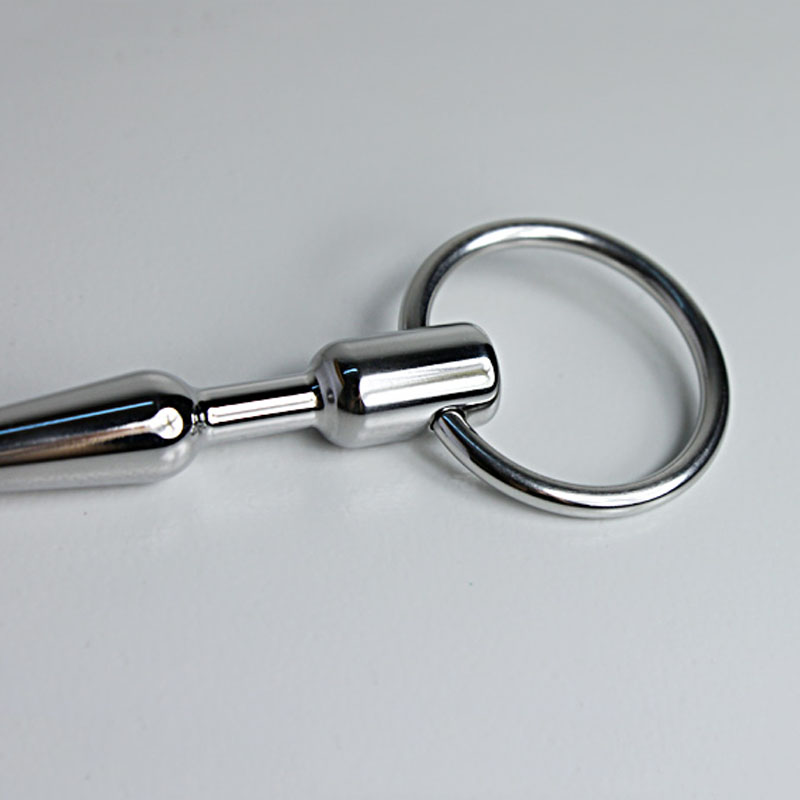
Urethral stricture – Symptoms and causes
Overview
A urethral (u-REE-thrul) stricture involves scarring that narrows the tube that carries urine out of your body (urethra). A stricture restricts the flow of urine from the bladder and can cause a variety of medical problems in the urinary tract, including inflammation or infection.
Products & Services
Show more products from Mayo Clinic
Symptoms
Signs and symptoms of urethral stricture include:
- Decreased urine stream
- Incomplete bladder emptying
- Spraying of the urine stream
- Difficulty, straining or pain when urinating
- Increased urge to urinate or more-frequent urination
- Urinary tract infection
Causes
Scar tissue, which can narrow the urethra, can be due to:
- A medical procedure that involves inserting an instrument, such as an endoscope, into the urethra
- Intermittent or long-term use of a tube inserted through the urethra to drain the bladder (catheter)
- Trauma or injury to the urethra or pelvis
- An enlarged prostate or previous surgery to remove or reduce an enlarged prostate gland
- Cancer of the urethra or prostate
- Sexually transmitted infections
- Radiation therapy
Urethral stricture is much more common in males than in females.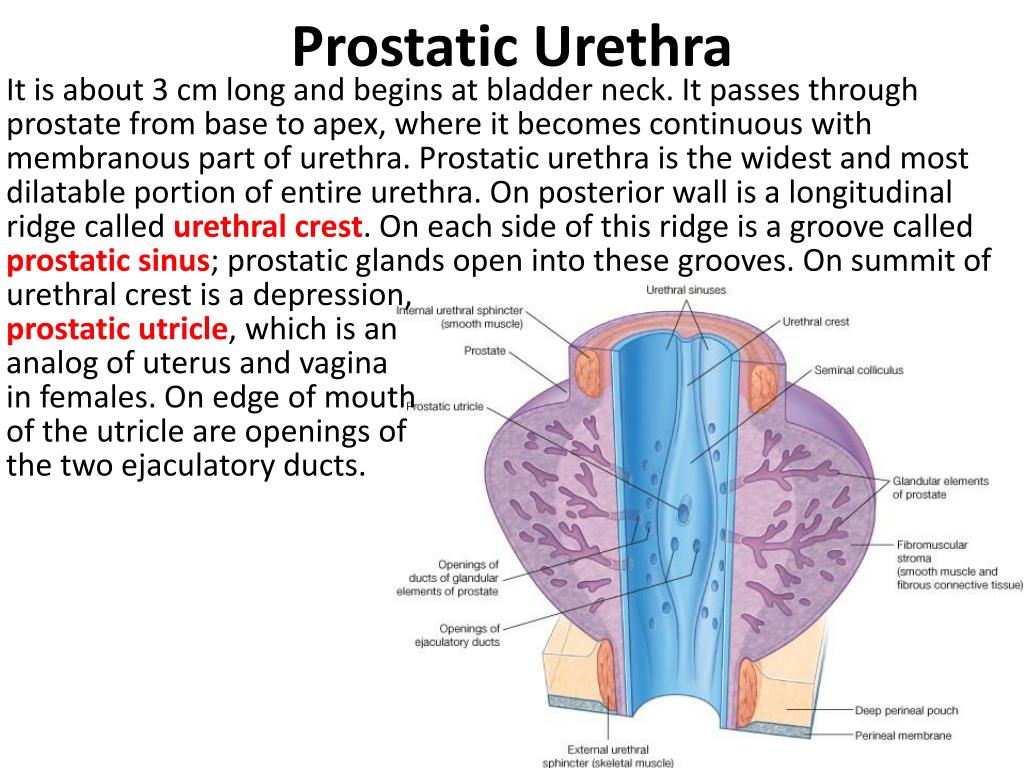 Often the cause is unknown.
Often the cause is unknown.
Clinical trials
Explore Mayo Clinic studies testing new treatments, interventions and tests as a means to prevent, detect, treat or manage this condition.
Urethral stricture care at Mayo Clinic
Oct. 20, 2020
Show references
- Peterson A. Urethral strictures in men. https://www.uptodate.com/contents/search. Accessed June 14, 2017.
- Male urethral stricture: AUA guideline. American Urological Association. https://www.auanet.org/guidelines/male-urethral-stricture-(2016). Accessed June 14, 2017.
- Tritschler S, et al. Urethral stricture: Etiology, investigation and treatments. Deutsches Ärzteblatt International. 2013;110:220.
- Riggin EA. AllScripts EPSi. Mayo Clinic, Rochester, Minn. April 10, 2017.
- Castle EP (expert opinion).
 Mayo Clinic, Rochester, Minn. June 28, 2017.
Mayo Clinic, Rochester, Minn. June 28, 2017.
Related
Products & Services
Show more products and services from Mayo Clinic
Urethral Stricture Causes & Treatment | Urology Associates
Urethral stricture at a glance
- The urethra is the tube that transports urine from the bladder to the exterior of the body, and urethral stricture is a narrowing of the urethra due to scarring or swelling from an injury or infection.
- Urethral strictures can result in difficulty passing urine, urinary tract infections, swelling, infections or injury of the kidneys.
- Currently, there are no medications to treat stricture, but procedures like dilation, urethrotomy and urethroplasty can be curative.

- Men are significantly more likely to be affected by urethral stricture than women.
What is urethral stricture?
Urethral stricture refers to the buildup of scar tissue in the urethra, which is the passage that empties urine from the bladder, slowing or blocking the ability to urinate. Men have a longer urethra and are more likely to experience scarring or narrowing of their urethra than women and infants.
The average male urethra, which runs from the bladder to the tip of the penis, is about 20 centimeters or approximately 8 inches in length and is surrounded by vascular tissue known as the corpus spongiosum. Stricture or narrowing can occur at any point in the urethra and is categorized based on where it occurs along the urethra.
Anterior urethral stricture
Anterior urethral strictures are the most common and occur anywhere along the urethra from the urethral meatus at the tip of the penis, in the penile urethra or in the bulbar urethra, which is located behind the scrotum.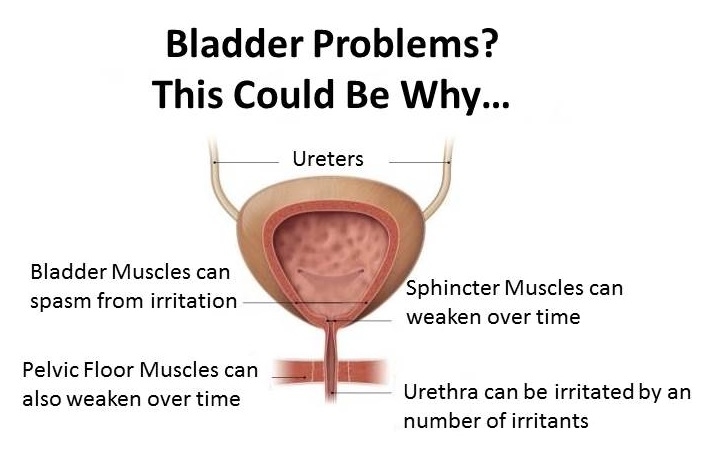 Anterior strictures are often caused by genital injuries, including straddle injuries where the legs fall on either side of an object, such as the crossbar on a bicycle.
Anterior strictures are often caused by genital injuries, including straddle injuries where the legs fall on either side of an object, such as the crossbar on a bicycle.
Posterior urethral stricture
Scar tissue development and narrowing of the urethra within 1-2 inches of the bladder is linked to more severe injuries such as pelvic fracture or radiation therapy. Posterior cases often result in a complete blockage or a cut that separates one part of the urethra from another, preventing urine from passing.
Causes of urethral stricture
Stricture or narrowing typically occurs due to chronic inflammation or the development of scar tissue at any point along the urethra. In many cases, the exact cause of scarring remains unknown, but there are a number of risk factors known to increase the risk of strictures including:
Urethral stricture symptoms
Patients often experience a slowing of their urine stream as their urethra starts to narrow. This decreased flow of urine can lead to difficulty emptying the bladder or pain during urination.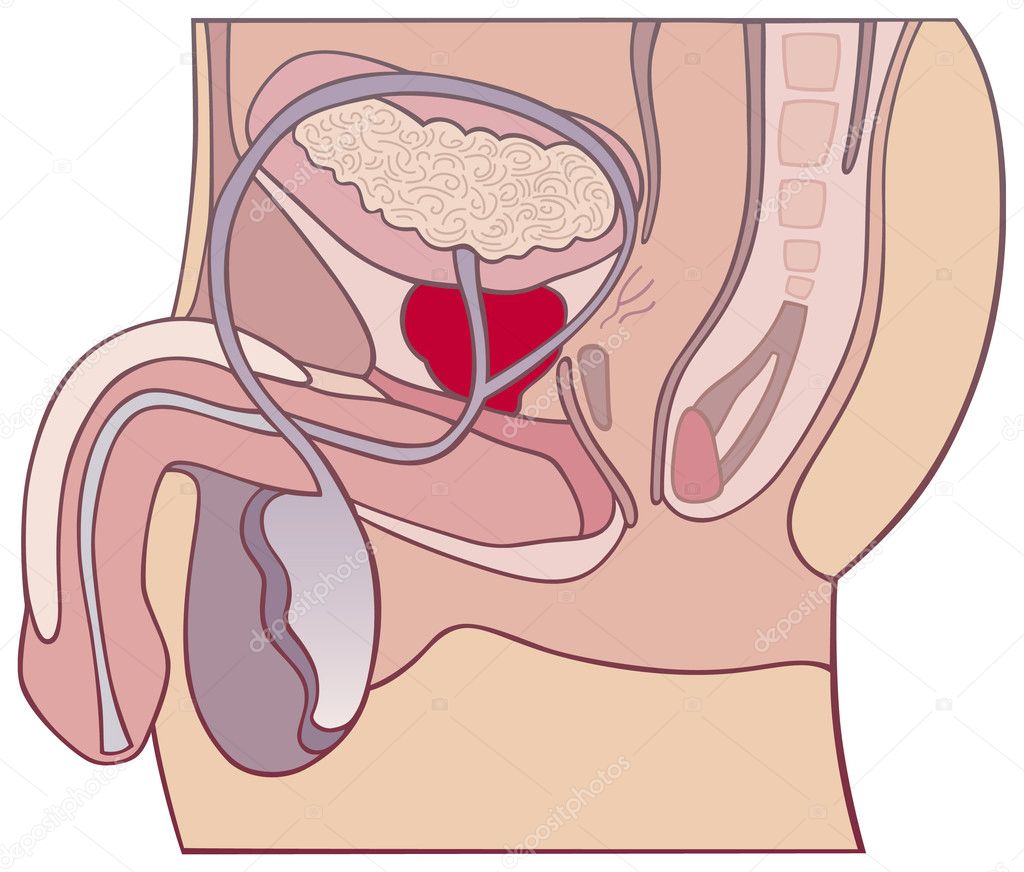 In the most severe cases, patients cannot empty the bladder at all. Other signs that a urethral stricture is forming or has formed include:
In the most severe cases, patients cannot empty the bladder at all. Other signs that a urethral stricture is forming or has formed include:
- Bloody or dark urine.
- Bloody semen.
- An increase in urinary frequency and urgency.
- Urine stream spraying.
- Abdominal pain.
- Penile swelling.
- Urinary tract infections.
Many patients with stricture will experience a slow progression of symptoms and discomfort. Others may experience symptoms suddenly and require more immediate care.
If left untreated, urethral narrowing causes the body to retain urine, which can cause the bladder to become enlarged and damage the kidneys.
Diagnosing & treating urethral stricture
Urethral strictures can be diagnosed via physical exam, using X-ray or ultrasound technology, or using a cystoscope, a small and flexible viewing instrument that is inserted into the urethra.
One popular method for diagnosis in males is a retrograde urethrogram. Retrograde urethrograms use contrast dye inserted through the opening of the penis and X-ray technology to locate urethral strictures and measure how much of the urethra is affected by scarred tissue.
Retrograde urethrograms use contrast dye inserted through the opening of the penis and X-ray technology to locate urethral strictures and measure how much of the urethra is affected by scarred tissue.
Once the location and severity of the stricture have been identified, the doctor will discuss methods for relieving the blockage and restoring urine flow. Currently there are not any medications available to treat stricture. However, there are a number of effective procedures that can treat stricture disease depending on the location of the scar tissue, how much of the urethra is involved, and what treatments have been tried in the past.
Dilation and urethrotomy
Dilation and urethrotomy are two less invasive methods of treating simple strictures that are short (< 1.5 cm in length), located in the bulbar urethra (the part behind the scrotum and inside the body), and when the patient has not had other treatments in the past. Both procedures involve opening the narrowed urethra to allow the tissue to heal with a wider diameter and improve the urinary stream.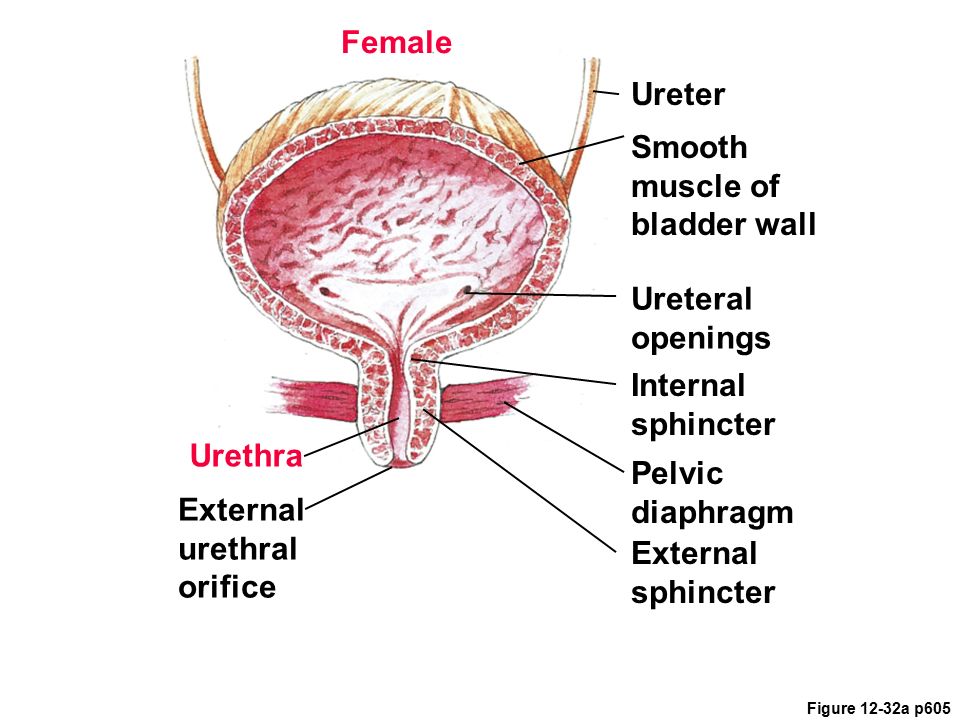
Dilation is a process of gradually stretching the part of the urethra that has been narrowing. This process uses small balloons or catheters known as “sounds” to gently stretch the tissue within the urethra. This treatment option must be repeated regularly. Dilation can lead to bleeding and infection, or cause a second, or false, urethra to form.
Urethrotomy is another method to open the scarred urethra, using a cystoscope to visualize the stricture and cut the scarred tissue to widen the urethra. This restores the ability to urinate and is typically performed in an outpatient facility, with the patient typically being discharged the day of the procedure. Urethrotomy can also lead to bleeding and infection, but these are self-limiting and resolve over 1-2 days.
Both dilation and urethrotomy offer initial treatment options for men with short strictures and can be successful in as many as 50%-75% of cases. However, patients should not have repeated procedures, as more than 1-2 dilation/urethrotomy procedures can lengthen or worsen the scar tissue.
Urethroplasty
Urethroplasty offers a definitive and highly successful surgical treatment for men who have longer strictures or scar tissue outside of the bulbar urethra, and for those who have not had success after less invasive procedures. Urethroplasty is a reconstructive surgery that restores the flow of fluid through the urethra, and has the best long-term results for treating stricture disease.
In most cases, the scarred segment of the urethra is removed and two resulting ends are sewn together to reconnect the tube. For longer strictures or those located closer to the tip of the penis, a graft from the surrounding skin or from inside the cheek may be needed to patch the urethra and create a wider tube. Urethroplasty is considered the gold standard of urethral stricture treatments and, depending on the technique, has a long-term success rate of 80%-95% when performed by a trained specialist.
Having difficulty with urethral strictures?
Our reconstructive urologist Dr. Michael Davenport has specialized expertise in the treatment of urethral stricture via urethroplasty, and strives to nurture and build positive and trusting relationships with his patient.
Michael Davenport has specialized expertise in the treatment of urethral stricture via urethroplasty, and strives to nurture and build positive and trusting relationships with his patient.
Make an Appointment
Urinary Incontinence in Men | Michigan Medicine
Topic Overview
What is urinary incontinence in men?
Urinary incontinence is the accidental leaking of urine. It’s not a disease. It’s a symptom of a problem with a man’s urinary tract.
Urine is made by the kidneys and stored in a sac made of muscle, called the urinary bladder. A tube called the urethra leads from the bladder through the prostate and penis to the outside of the body. Around this tube is a ring of muscles called the urinary sphincter. As the bladder fills with urine, nerve signals tell the sphincter to stay squeezed shut while the bladder stays relaxed. The nerves and muscles work together to prevent urine from leaking out of the body.
When you have to urinate, the nerve signals tell the muscles in the walls of the bladder to squeeze.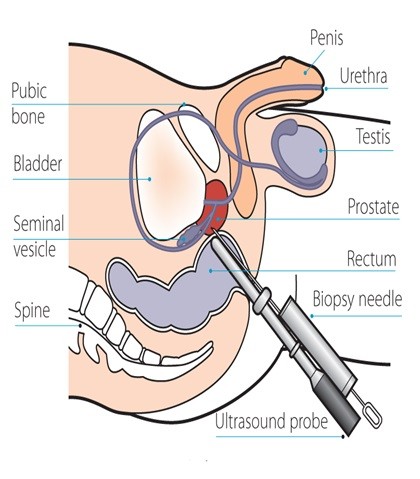 This forces urine out of the bladder and into the urethra. At the same time the bladder squeezes, the urethra relaxes. This allows urine to pass through the urethra and out of the body.
This forces urine out of the bladder and into the urethra. At the same time the bladder squeezes, the urethra relaxes. This allows urine to pass through the urethra and out of the body.
Incontinence can happen for many reasons:
- If your bladder squeezes at the wrong time, or if it squeezes too hard, urine may leak out.
- If the muscles around the urethra are damaged or weak, urine can leak out even if you don’t have a problem with your bladder squeezing at the wrong time.
- If your bladder doesn’t empty when it should, you are left with too much urine in the bladder. If the bladder gets too full, urine will leak out when you don’t want it to.
- If something is blocking your urethra, urine can build up in the bladder. This can cause leaking.
Urinary incontinence happens more often in older men than in young men. But it’s not just a normal part of aging.
What are the types and symptoms of urinary incontinence ?
Urinary incontinence can be short-term or long-lasting (chronic).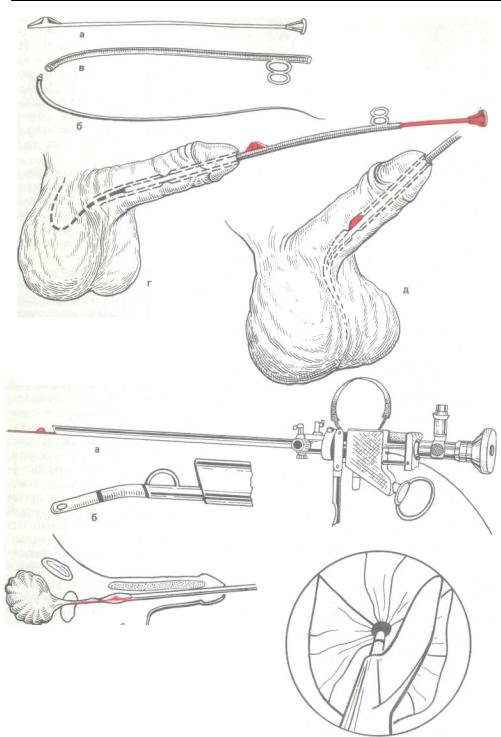 Short-term incontinence is often caused by other health problems or treatments. This topic is about the different types of chronic urinary incontinence:
Short-term incontinence is often caused by other health problems or treatments. This topic is about the different types of chronic urinary incontinence:
- Stress incontinence means that you leak urine when you sneeze, cough, laugh, lift something, change position, or do something that puts stress or strain on your bladder.
- Urge incontinence is an urge to urinate that’s so strong that you can’t make it to the toilet in time. It also happens when your bladder squeezes when it shouldn’t. This can happen even when you have only a small amount of urine in your bladder. Overactive bladder is a kind of urge incontinence. But not everyone with an overactive bladder leaks urine.
- Overflow incontinence means that you have the urge to urinate, but you can release only a small amount. Since your bladder doesn’t empty as it should, it then leaks urine later.
- Total incontinence means that you are always leaking urine.
 It happens when the sphincter muscle no longer works.
It happens when the sphincter muscle no longer works. - Functional incontinence means that you can’t make it to the bathroom in time to urinate. This is usually because something got in your way or you were not able to walk there on your own.
What causes urinary incontinence in men?
Different types of incontinence have different causes.
- Stress incontinence can happen when the prostate gland is removed. If there has been damage to the nerves or to the sphincter, the lower part of the bladder may not have enough support. Keeping urine in the bladder is then up to the sphincter alone.
- Urge incontinence is caused by bladder muscles that squeeze so hard that the sphincter can’t hold back the urine. This causes a very strong urge to urinate.
- Overflow incontinence can be caused by something blocking the urethra, which leads to urine building up in the bladder.
 This is often caused by an enlarged prostate gland or a narrow urethra. It may also happen because of weak bladder muscles.
This is often caused by an enlarged prostate gland or a narrow urethra. It may also happen because of weak bladder muscles.
In men, incontinence is often related to prostate problems or treatments.
Drinking alcohol can make urinary incontinence worse. Taking prescription or over-the-counter drugs such as diuretics, antidepressants, sedatives, opioids, or nonprescription cold and diet medicines can also affect your symptoms.
How is the cause diagnosed?
Your doctor will do a physical exam, ask questions about your symptoms and past health, and test your urine. Often this is enough to help the doctor find the cause of the incontinence. You may need other tests if the leaking is caused by more than one problem or if the cause is unclear.
How is it treated?
Treatments depend on the type of incontinence you have and how much it affects your life. Your treatment may include medicines, simple exercises, or both. A few men need surgery, but most don’t.
There are also some things you can do at home. In many cases, these lifestyle changes can be enough to control incontinence.
- Cut back on caffeine drinks, such as coffee and tea. Also cut back on fizzy drinks like soda pop. And limit alcohol to no more than 1 drink a day.
- Eat foods high in fiber to help avoid constipation.
- Don’t smoke. If you need help quitting, talk to your doctor about stop-smoking programs and medicines. These can increase your chances of quitting for good.
- Stay at a healthy weight.
- Try simple pelvic-floor exercises like Kegels.
- Go to the bathroom at several set times each day. Wear clothes that you can remove easily. Make your path to the bathroom as clear and quick as you can.
- When you urinate, practice double voiding. This means going as much as you can, relaxing for a moment, and then going again.
- Use a diary to keep track of your symptoms and any leaking of urine.
 This can help you and your doctor find the best treatment for you.
This can help you and your doctor find the best treatment for you.
If you have symptoms of urinary incontinence, don’t be embarrassed to tell your doctor. Most people with incontinence can be helped or cured.
Cause
Urinary incontinence occurs when the bladder’s sphincter muscle is not strong enough to hold back the urine. This may happen when:
- The sphincter is too weak.
- The bladder muscles contract too strongly.
- The bladder is too full.
Prostate treatment is a major cause of urinary incontinence in men.
- Short-term incontinence after prostate surgery can go away with time, especially for younger men. In some cases, it lasts up to a year.
- Stress incontinence is a common problem after prostate removal (radical prostatectomy) or radiation treatment for prostate cancer. It is becoming less common with better surgical techniques.
- Some treatments for an enlarged prostate (benign prostatic hyperplasia, or BPH) can also cause incontinence.
 But this isn’t common.
But this isn’t common.
The bladder contractions that cause urge incontinence can be caused by many conditions, including:
- Urinary tract infection.
- Bowel problems, such as constipation.
- Prostatitis. This is a painful infection of the prostate gland.
- Certain conditions that affect nerve signals from the brain, such as Parkinson’s disease or stroke.
- Kidney or bladder stones.
- Blockage from prostate cancer or benign prostatic hyperplasia (BPH).
Overflow incontinence is usually caused by blockage of the urethra from BPH or prostate cancer. Other causes include:
- Narrowing of the urethra (stricture).
- Medicines, such as antihistamines and decongestants.
- Nerve conditions, such as diabetes or multiple sclerosis.
You can have one or more types of incontinence. Each type may have a different cause.
Symptoms
Your symptoms depend on the type of urinary incontinence you have.
The main symptom of stress incontinence is the leaking of urine when you cough, laugh, lift, strain, or change posture.
Symptoms of urge incontinence may include:
- A sudden, urgent need to urinate.
- Sudden leakage of a large amount of urine.
- The need to urinate frequently, often at night.
Symptoms of overflow incontinence may include:
- A urine stream that starts and stops when you urinate.
- Leakage of a small amount of urine.
- A weak urine stream.
- A need to strain while urinating and a sense that the bladder is not empty.
- An urgent need to urinate, often at night.
- Leaking urine while asleep.
What Happens
Urinary incontinence is often related to prostate problems. As men age, the prostate gland grows larger. It can squeeze the urethra and push the neck of the bladder out of position. These changes can lead to incontinence.
These changes can lead to incontinence.
Stress incontinence
happens when the muscle (sphincter) surrounding the urethra opens at the wrong time. This can be when you laugh, sneeze, cough, lift something, or change posture.Urge incontinence
happens when bladder contractions are too strong to be stopped by the sphincter. Often the urge is a response to something that makes you expect to urinate. It can happen when you wait to use a toilet, unlock the door when you come home, or even turn on a faucet. Overactive bladder is a kind of urge incontinence. But not everyone with overactive bladder leaks urine. For more information, see the topic Overactive Bladder.Overflow incontinence
usually is caused by blockage of the urethra from BPH or prostate cancer. It also happens when the bladder muscles contract weakly or don’t contract when they should.
Functional incontinence
can happen when there are physical or mental limitations that restrict a man’s ability to reach the toilet in time.
In most cases, incontinence caused by an enlarged prostate can be cured by medicine or prostate surgery.
If your incontinence is not related to prostate surgery and it appears suddenly, it will usually clear up after you get treatment for whatever is causing it. For example, incontinence related to a urinary tract infection, prostatitis, or constipation will most likely disappear when the infection or condition is cured.
What Increases Your Risk
Many things have been linked to an increased risk of urinary incontinence in men.
Physical conditions or lifestyle
- Age-related changes, including decreased bladder capacity and physical frailty
- Smoking tobacco
- Injury to the bladder or urethra, such as from radiation therapy or prostate surgery
- Bladder infection or prostatitis
- Obesity
- Structural abnormalities of the urinary tract
Medicines and foods
- Caffeinated and carbonated drinks, such as coffee, tea, and soda pop
- Alcohol
- Prescription medicines that increase urine production, such as diuretics, or relax the bladder, such as anticholinergics and antidepressants
- Other prescription medicines, such as sedatives, opioids, and calcium channel blockers
- Nonprescription medicines, such as diet, allergy, and cold medicines
Diseases and health conditions
- Neurological conditions such as Alzheimer’s disease, Parkinson’s disease, stroke, diabetes, spinal injury, and multiple sclerosis
- Bladder cancer
- Chronic bronchitis
- Interstitial cystitis
- Anxiety and depression
When should you call your doctor?
See your doctor right away if your urinary incontinence does not go away or you also have:
- Weakness or numbness in your buttocks, legs, and feet.

- Fever, chills, and belly or flank pain.
- Blood in your urine or burning with urination.
- A change in your bowel habits.
Call your doctor if:
- Your incontinence gets worse.
- Leaking urine is enough of a problem that you need to wear a pad to absorb it.
- Incontinence interferes with your life in any way.
Don’t be embarrassed to discuss incontinence with your doctor. It is not something that always happens with aging. Most people with incontinence can be helped or cured.
Watchful waiting
If you have chronic urinary incontinence that begins slowly, you may be able to control the problem yourself. If home treatment doesn’t control your problem, or if incontinence bothers you, ask your doctor about treatment.
If you have incontinence that begins suddenly (acute), call your doctor. Acute incontinence is often caused by urinary tract problems or medicines. It can be easily corrected.
It can be easily corrected.
Who to see
Any of the following health professionals can diagnose and treat urinary incontinence:
If you need surgery to treat your incontinence, make sure to find a surgeon who is experienced in the type of surgery you need, usually a urologist.
Exams and Tests
To learn the cause of your urinary incontinence, your doctor will first review your medical history and give you a physical exam. Along with routine testing, such as a urinalysis, this may be all your doctor needs to diagnose the cause and start treatment.
Your doctor may ask you to keep a voiding log. This is a record of the amount of liquids you drink and how much and how often you urinate.
Incontinence testing
Tests that may be done to find the type and cause of your urinary incontinence include:
- Urinalysis and urine culture. These tests show whether you have a urinary tract infection (UTI) or prostatitis, or blood or sugar in your urine.

- Cough test. It checks for urine leakage while you cough.
- Urodynamic tests, which may include:
- Uroflowmetry. This test measures your rate of urine flow. A low peak flow rate can be a sign of a blockage or a weak bladder.
- Pressure flow studies. This testing measures pressure changes in the bladder as the flow changes. It is often used when the cause of a man’s symptoms is uncertain. It can help show if the cause may be a blockage or a problem with the bladder muscles or nerves.
- Post-void residual volume. This test measures the amount of urine left after you empty your bladder.
- Cystometrogram (CMG). This test measures how well your bladder can store and release urine.
- Electromyogram (EMG). This test records the electrical activity of muscles.
Your doctor may do a cystoscopic exam. This is a test that allows your doctor to see inside the urinary tract.
Other tests
You may need more tests if:
- The first treatment for incontinence has failed.

- You have had previous prostate surgery, radiation therapy, or frequent urinary tract infections.
- A catheter cannot be easily placed into your bladder.
Some tests aren’t often used for incontinence, but they may be helpful. One example is cystourethrogram. It’s an X-ray of your bladder and urethra while you are urinating.
If your doctor wants to do more tests, ask how the test can help your doctor treat your incontinence.
Treatment Overview
The treatment you and your doctor choose depends on your type of urinary incontinence and how bad your symptoms are.
If there is no infection or cancer or other cause that could only be cured by surgery, treatment is done in stages.
- Behavioral strategies may be enough to control your symptoms. These include simple changes to your diet, lifestyle, and urinary habits. See Home Treatment for more information.
- Medicines that treat infection or bladder muscle spasm may help.

- Self-catheterization may help you manage overflow incontinence from a weak bladder or blockage. It may also be used if surgery is not the best option for you. When you need to drain your bladder, you insert a thin, hollow tube through your urethra into the bladder. To learn more, see Other Treatment.
- Surgery is usually considered when it is the only treatment that can cure the incontinence, such as when the condition is caused by a bladder blockage.
Many men who have urge incontinence or overflow incontinence also have an enlarged prostate gland (benign prostatic hyperplasia, or BPH). For more information, see the topic Benign Prostatic Hyperplasia (BPH).
What to think about
Exercise is important for your physical and emotional health. Even if being active causes some leakage, get regular exercise. It can help you manage stress and keep your muscles in tone.
Continence products absorb urine or apply pressure to keep urine from leaking. To learn more, see Other Treatment.
To learn more, see Other Treatment.
Prevention
You may reduce your chances of developing urinary incontinence by:
- Limiting caffeine and alcohol.
- Getting to and staying at a healthy weight.
- Quitting smoking.
- Avoiding constipation by eating a healthy, high-fiber diet.
- Doing Kegel exercises to strengthen the muscles that control the flow of urine.
Home Treatment
You can use behavioral strategies to help control urinary incontinence. These include simple changes to your diet, lifestyle, and urinary habits.
Diet and lifestyle strategies
- Reduce or stop drinking caffeinated and carbonated drinks, such as coffee, tea, and soda pop.
- Limit alcohol to no more than 1 drink a day.
- Eat less of any food that might irritate your bladder. Then look for changes in your bladder habits. Such foods include citrus fruit, chocolate, tomatoes, vinegars, spicy foods, dairy products, and aspartame.

- If you smoke, quit.
- Avoid constipation:
- Include fruits, vegetables, beans, and whole grains in your diet each day. These foods are high in fiber.
- Drink enough fluids. Don’t avoid drinking fluid because you are worried about leaking urine.
- Get some exercise every day. Try to do moderate activity at least 2½ hours a week. Or try to do vigorous activity at least 1¼ hours a week. It’s fine to be active in blocks of 10 minutes or more throughout your day and week.
- Take a fiber supplement with psyllium (such as Metamucil) or methylcellulose (such as Citrucel) each day. Read and follow all instructions on the label.
- Schedule time each day for a bowel movement. Having a daily routine may help. Take your time and don’t strain.
- If you are overweight, try to lose some weight. Be more active, and make small, healthy changes to what and how much you eat. You will notice good results over time.
- Try pelvic floor (Kegel) exercises to strengthen your pelvic muscles.

Urinary habits
Try one or more of these tips. They may help you gain some control over your symptoms:
- Set a schedule for urinating every 2 to 4 hours. Go whether or not you feel the need.
- Practice “double voiding.” This means urinating as much as possible, relaxing for a few moments, and then urinating again.
- If you have trouble reaching the bathroom before you urinate, consider making a clearer, quicker path to the bathroom. Wear clothes that are easy to take off (such as those with elastic waistbands or Velcro closures). Or keep a urinal close to your bed or chair.
Talk with your doctor about all the medicines you take, including nonprescription medicines, to see if any of them may be making your incontinence worse. Medicines that may cause urinary incontinence in men include certain antidepressants, sedatives, and even some allergy and cold medicines.
Medications
Medicine can help with some types of urinary incontinence.
Medicine choices
- For overflow incontinence: If incontinence is caused by an enlarged prostate, medicines to treat benign prostatic hyperplasia may be prescribed. But these medicines don’t always improve incontinence. For more information, see the topic Benign Prostatic Hyperplasia (BPH).
- For urge incontinence:
- Anticholinergic and antispasmodic medicines, such as oxybutynin and tolterodine, calm the nerves that control bladder muscles and increase bladder capacity.
- Alpha-blocker medicines, such as alfuzosin and tamsulosin, relax the muscles in the prostate and bladder.
- The antidepressant medicine duloxetine may help with bladder control.
- Botox (botulinum toxin) may be an option when other medicines don’t work. A Botox shot helps relax the bladder muscles.
- For stress incontinence: The antidepressant medicine duloxetine may help with bladder control.
What to think about
Some medicines that are used to treat incontinence may actually make it worse in men whose incontinence is caused by an enlarged prostate gland (benign prostatic hyperplasia, or BPH). So consulting with a urologist is an important part of incontinence care.
So consulting with a urologist is an important part of incontinence care.
Surgery
Surgery may be an option for men who:
- Have ongoing (chronic) incontinence.
- Have severe symptoms and total incontinence.
- Are extremely bothered by their symptoms.
- Have problems with urinary retention.
- Have moderate to severe blood in the urine (hematuria) that keeps coming back.
- Have urinary tract infections that keep coming back.
- Have a medical problem that can only be treated with surgery. One example is a bladder outlet blockage that is affecting kidney function.
Surgery choices
Overflow incontinence caused by an enlarged prostate (benign prostatic hyperplasia, or BPH) is the form of incontinence most often treated with surgery. For more information about surgery options and treatment for BPH, see the topic Benign Prostatic Hyperplasia (BPH).
Stress incontinence caused by removal of the prostate gland may also be treated with surgery if the incontinence isn’t cured after a period of watchful waiting.
Surgery for severe stress incontinence that does not improve with behavioral methods includes:
- Artificial sphincter. A silicone rubber device is fitted around the urethra (the tube that carries urine from your bladder to the outside of your body). It can be inflated or deflated to control urination.
- Urethral bulking. Material is injected around the urethra. This serves to control urination by either closing a hole in the urethra or building up the thickness of the wall of the urethra.
- Bulbourethral sling. A sling is placed beneath the urethra. It is attached to either muscle tissue or the pubic bone. The sling compresses and raises the urethra. This gives the urethra greater resistance to pressure from the belly. Sling surgery may be considered as a treatment for severe urinary incontinence from prostate surgery.
- Sacral nerve stimulation (SNS). An electrical stimulator under your skin sends pulses to the sacral nerve in your lower back. This nerve plays a role in bladder storage and emptying.

Severe urge incontinence may be treated with surgery to make the bladder bigger (augmentation cystoplasty) or to make another way to store and pass urine (urinary diversion).
What to think about
Surgery works for some people and not others. It is most likely to improve incontinence when:
- The diagnosis is right.
- The cause of your symptoms is something that can be fixed by surgery.
- Your surgeon is very experienced and skilled with the surgery you’re having.
Things that can lead to disappointing results include:
- Unrealistic expectations. Surgery won’t always cure the symptoms, but it will usually improve them.
- Physical factors such as obesity, long-term cough, radiation therapy, poor nutrition, age, and heavy physical activity.
Other Treatment
Treatment other than surgery or medicine may be used to treat urinary incontinence.
- For stress incontinence, biofeedback can help you learn to read your body’s signals.
 This helps you improve control.
This helps you improve control. - For urge incontinence, behavioral therapies such as biofeedback and bladder training can help you control the bladder muscles.
- For overflow incontinence, using a catheter tube to drain your bladder can help you keep your bladder from getting too full.
Catheters
- Catheterization may be used to treat severe incontinence that cannot be managed with medicines or surgery. Catheters don’t cure incontinence. But they do allow you or a caregiver to manage it.
- Intermittent self-catheterization is done with a thin, flexible, hollow tube (catheter) that is inserted through the urethra into the bladder. This allows the urine to drain out.
- Indwelling catheterization uses a catheter that remains in place at all times. For more information, see the topic Care for an Indwelling Urinary Catheter.
- Condom or Texas catheter uses a special condom that can be attached to a tube for short-term use.
 The condom, placed over the penis, keeps the tube in place. The tube allows the urine to drain out.
The condom, placed over the penis, keeps the tube in place. The tube allows the urine to drain out.
Behavioral therapy
Behavioral therapies, including biofeedback and pelvic muscle exercises, are used to treat urge and stress incontinence.
Continence products
Products such as absorbent pads or diapers, incontinence clamps, or pressure cuffs may be used to manage any form of incontinence. Some of these products absorb leaked urine. Others put pressure on the urethra to help prevent urine from leaking.
References
Other Works Consulted
- Chapple CR, Milson I (2012). Urinary incontinence and pelvic prolapse: Epidemiology and pathophysiology. In AJ Wein et al., eds., Campbell-Walsh Urology, 10th ed., vol. 3, pp. 1871–1895. Philadelphia: Saunders.
- Herschorn S (2012). Injection therapy for urinary incontinence.
In AJ Wein et al., eds., Campbell-Walsh Urology, 10th ed., vol. 3, pp. 2168–2185. Philadelphia: Saunders.
- Naumann M, et al. (2008). Assessment: Botulinum neurotoxin in the treatment of autonomic disorders and pain (an evidence-based review): Report of the Therapeutics and Technology Assessment Subcommittee of the American Academy of Neurology. Neurology, 70(19): 1707–1714.
- Resnick, NM (2012). Incontinence. In L Goldman, A Shafer, eds., Goldman’s Cecil Medicine, 24th ed., pp. 110–114. Philadelphia: Saunders.
- Silva LA, et al. (2011). Surgery for stress urinary incontinence due to presumed sphincter deficiency after prostate surgery. Cochrane Database of Systematic Reviews (4).
- Wadie BS (2010). Retropubic bulbourethral sling for post-prostatectomy male incontinence: 2-year followup. Journal of Urology, 184(6): 2446–2451.
Credits
Current as of:
June 29, 2020
Author: Healthwise Staff
Medical Review:
E. Gregory Thompson MD – Internal Medicine
Gregory Thompson MD – Internal Medicine
Adam Husney MD – Family Medicine
Kathleen Romito MD – Family Medicine
Avery L. Seifert MD – Urology
Current as of: June 29, 2020
Author:
Healthwise Staff
Medical Review:E. Gregory Thompson MD – Internal Medicine & Adam Husney MD – Family Medicine & Kathleen Romito MD – Family Medicine & Avery L. Seifert MD – Urology
The Male Urinary Problem That Won’t Just Go Away
Aug 17, 2021 1:00 PM
Sometime in your 40s or 50s you might notice that you wake up a lot more at night, to go to the bathroom. It’s something that happens to men when their prostate enlarges. And according to experts, like University of Utah Health urologist Stephen Summers, MD, it’s not a problem that goes away on its own.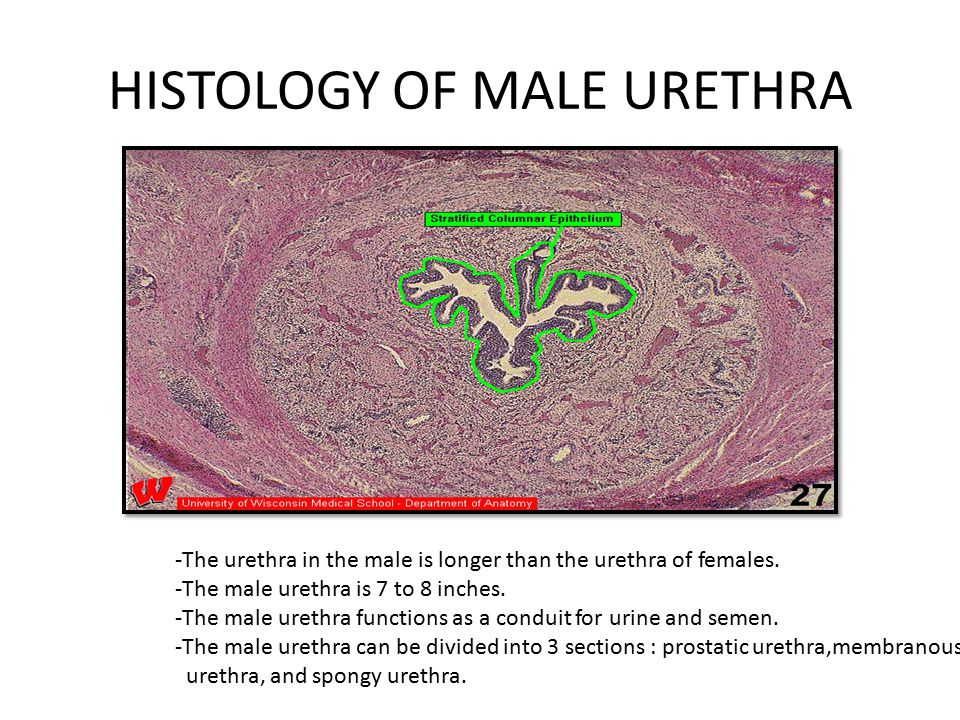
“The prostate continues to grow throughout a man’s life,” says Summers. “You may start having problems in your 40s. It’s largely genetic.”
About 50 percent of men have significant BPH symptoms by age 50.
Stephen Summers, MD
Benign prostatic hyperplasia (BPH) is the medical term for it, when the prostate gland grows inward and pinches the urethra, obstructing the urinary system.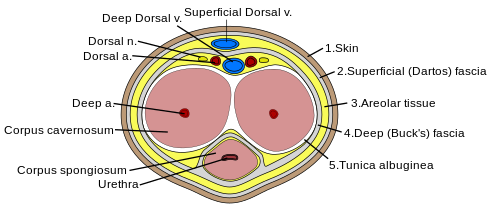 What is the main cause of BPH? There’s no one cause, but Summers says you’re more likely to have the problem if your father or brothers do.
What is the main cause of BPH? There’s no one cause, but Summers says you’re more likely to have the problem if your father or brothers do.
Other contributing factors include obesity; high blood sugar; and high intake of caffeine and alcohol, both of which irritate the bladder.
BPH is Common Among Men
Urinary health in men is an issue worth attention. About 50 percent of men have significant BPH symptoms by age 50, and it increases with each decade of life. Summers says some men even experience symptoms in their 30s. Those symptoms include:
- A slow stream of urine;
- starting and stopping while urinating;
- inability to empty your bladder completely;
- bladder irritation or discomfort;
- feeling an urgency to urinate;
- waking up multiple times at night to urinate; and/or
- urinary incontinence (an inability to control your bladder).
Urinary health is something some men find difficult to talk about.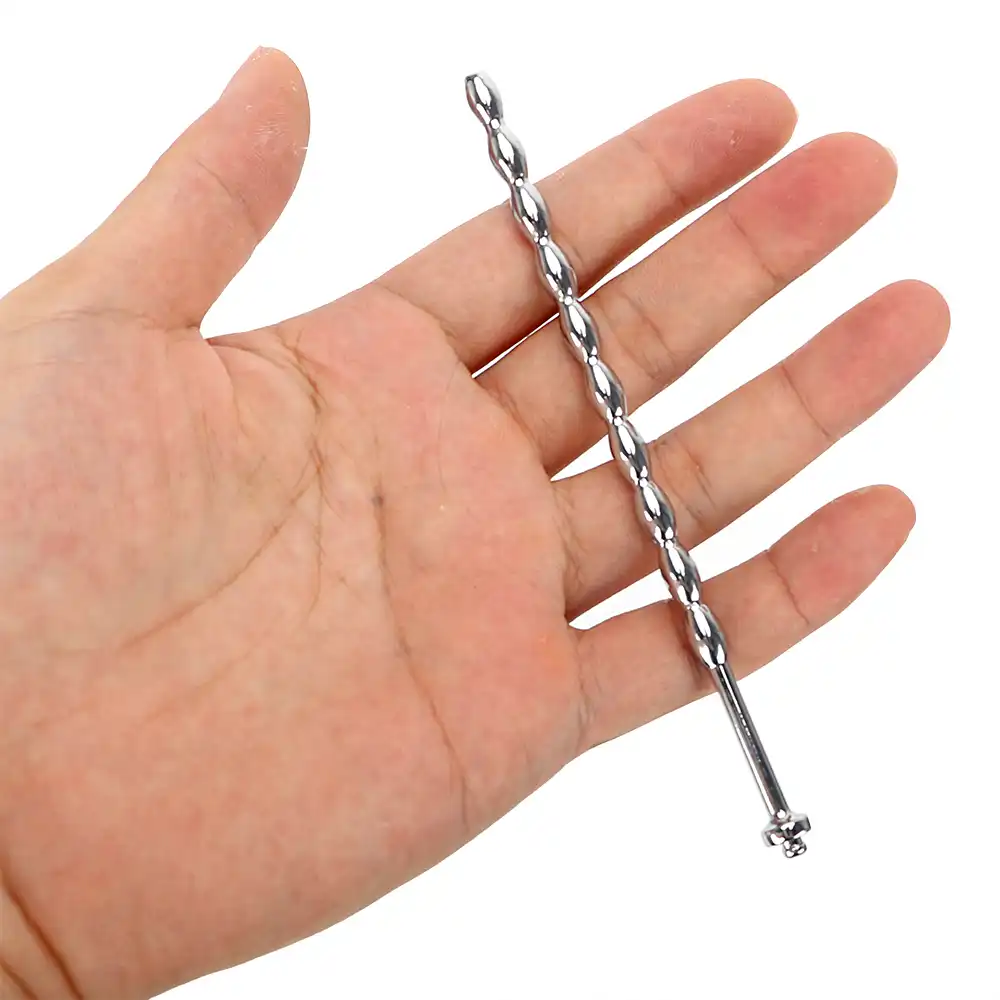 “A lot of patients have that concern, that this is something private. And, I certainly understand that,” says Summers “But it’s something very regular that we see all the time.”
“A lot of patients have that concern, that this is something private. And, I certainly understand that,” says Summers “But it’s something very regular that we see all the time.”
There are a Wide Variety of BPH Treatment Options
Treatment with medications can give you a 25 to 30 percent reduction in prostate volume, but they’re slow to work, and some are associated with erectile dysfunction (ED). On the flip side, one of the most common surgical procedures, Urolift, offers immediate relief, and it’s done in office.
It’s kind of like you’re in a mine shaft, and it’s collapsing, so you’re putting up struts to support it.
Stephen Summers, MD
A typical range of BPH treatment options includes:
- Lifestyle changes—weight and blood sugar management; reducing alcohol and caffeine intake; urinating at regular intervals
- Flomax or Tamsulosin—alpha blockers that relax smooth muscle (first line therapy)
- Dutastaride or Finasteride—blocks the effects of testosterone to limit prostate growth (second line therapy)
- Cialis— Phosphodiesterase inhibitors approved to treat both ED and BPH (third line therapy)
- Urolift surgery—small implant that holds back prostate tissue
- Rezum procedure—steam or water vapor targeted to kill prostate cells
There are also multiple BPH surgery types, so the focus at U of U Health is on shared decision-making, after determining what options you’re a candidate for.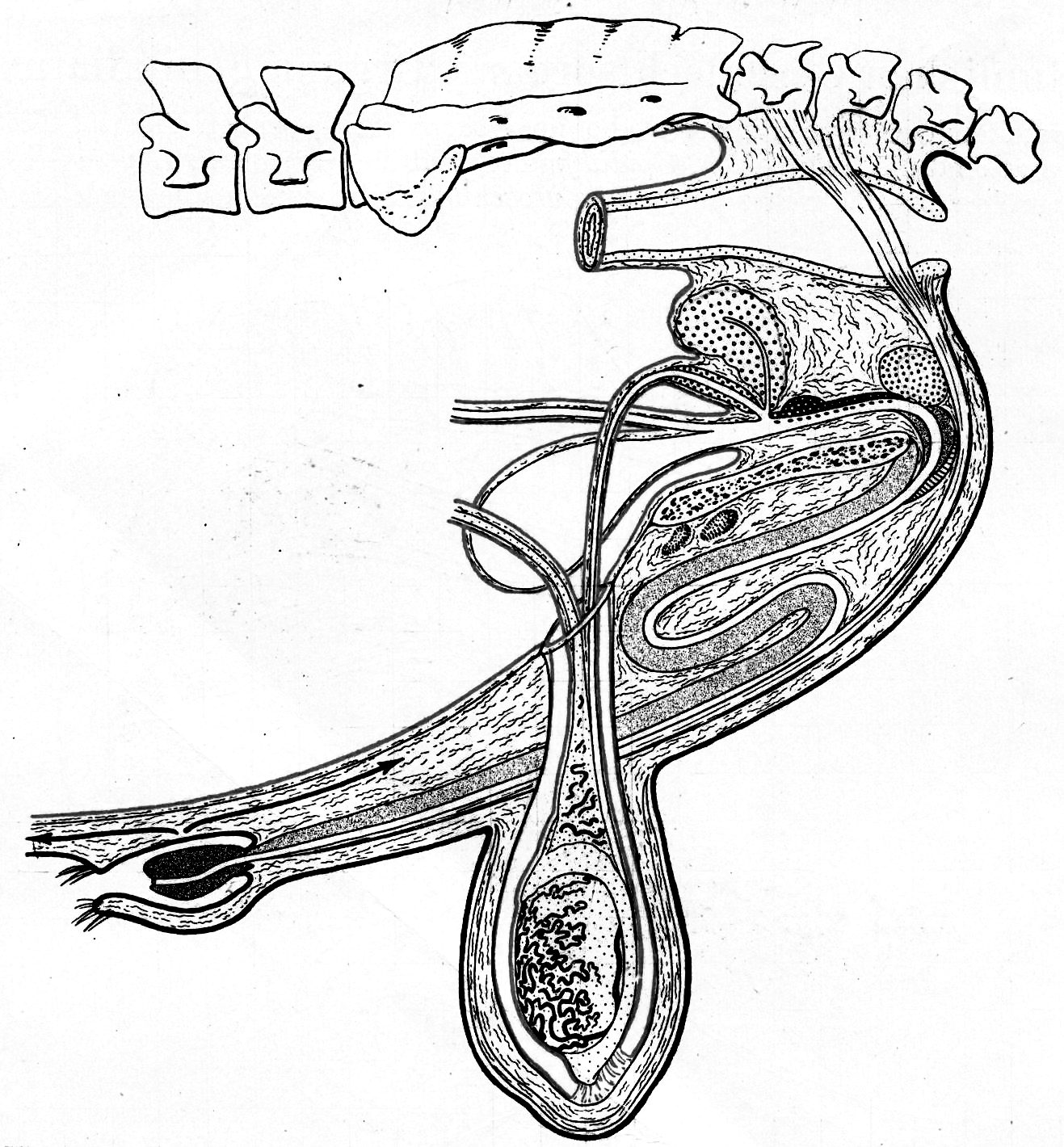
“Most patients would prefer to trial medications before moving on to surgery,” says Summers. “But there are some that say, ‘You know, I, I don’t want to take a pill the rest of my life. I’d rather move right on to surgery.’”
BPH’s Relation to Prostate Cancer
Summers says BPH is not a precursor to prostate cancer, though his patients often worry about that.
“Prostate cancer may have no symptoms at all,” Summers says. “but we do screening for prostate cancer during any workup for BPH.”
Part of that cancer screening is checking prostate specific antigen (PSA) levels. Of note, both prostate cancer and BPH can cause an elevated PSA.
What to Expect When You Go to The Doctor for BPH Treatment?
At your U of U Health appointment, you’ll be asked to fill out a symptom questionnaire. Summers says he reviews your health history; completes a physical, including a prostate exam; and he may ultrasound your prostate. A cystoscopy is sometimes also done to look through the urethra.
“That helps us make sure that it’s a prostate enlargement causing the blockage and not, say, a scar along the urethra or a stone that’s sitting in there or other issue.”
Summers says he always screens for a urinary tract infection and treats that first, to see if symptoms subside.
When Should You Go to The Doctor for Urinary Health?
Seek treatment when symptoms arise. When you work harder to push urine out, you’re putting pressure on your bladder. This may lead to bladder abnormalities or other issues. “It’s better to intervene earlier. What happens if you delay too long, is your bladder undergoes irreversible changes,” says Summers. “We’ve all seen patients that end up in renal failure because they’ve neglected their urinary symptoms. That’s one reason to stay on top of this.”
Prostate Enlargement (Benign Prostatic Hyperplasia)
On this page:
What is benign prostatic hyperplasia?
Benign prostatic hyperplasia—also called BPH—is a condition in men in which the prostate gland is enlarged and not cancerous.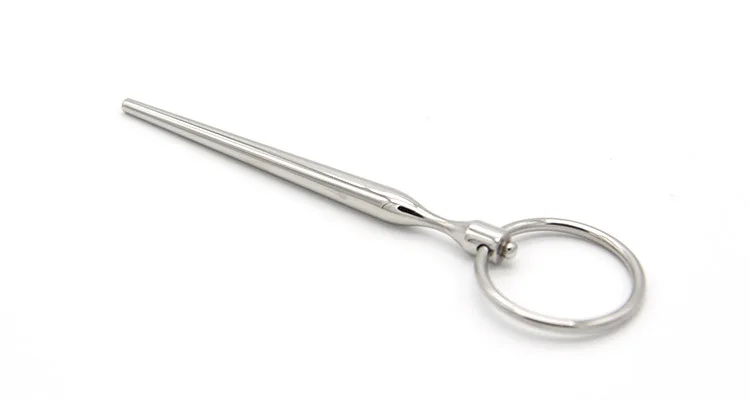 Benign prostatic hyperplasia is also called benign prostatic hypertrophy or benign prostatic obstruction.
Benign prostatic hyperplasia is also called benign prostatic hypertrophy or benign prostatic obstruction.
The prostate goes through two main growth periods as a man ages. The first occurs early in puberty, when the prostate doubles in size. The second phase of growth begins around age 25 and continues during most of a man’s life. Benign prostatic hyperplasia often occurs with the second growth phase.
As the prostate enlarges, the gland presses against and pinches the urethra. The bladder wall becomes thicker. Eventually, the bladder may weaken and lose the ability to empty completely, leaving some urine in the bladder. The narrowing of the urethra and urinary retention—the inability to empty the bladder completely—cause many of the problems associated with benign prostatic hyperplasia.
What is the prostate?
The prostate is a walnut-shaped gland that is part of the male reproductive system. The main function of the prostate is to make a fluid that goes into semen. Prostate fluid is essential for a man’s fertility. The gland surrounds the urethra at the neck of the bladder. The bladder neck is the area where the urethra joins the bladder. The bladder and urethra are parts of the lower urinary tract. The prostate has two or more lobes, or sections, enclosed by an outer layer of tissue, and it is in front of the rectum, just below the bladder. The urethra is the tube that carries urine from the bladder to the outside of the body. In men, the urethra also carries semen out through the penis.
Prostate fluid is essential for a man’s fertility. The gland surrounds the urethra at the neck of the bladder. The bladder neck is the area where the urethra joins the bladder. The bladder and urethra are parts of the lower urinary tract. The prostate has two or more lobes, or sections, enclosed by an outer layer of tissue, and it is in front of the rectum, just below the bladder. The urethra is the tube that carries urine from the bladder to the outside of the body. In men, the urethra also carries semen out through the penis.
The prostate is a walnut-shaped gland that is part of the male reproductive system.
What causes benign prostatic hyperplasia?
The cause of benign prostatic hyperplasia is not well understood; however, it occurs mainly in older men. Benign prostatic hyperplasia does not develop in men whose testicles were removed before puberty. For this reason, some researchers believe factors related to aging and the testicles may cause benign prostatic hyperplasia.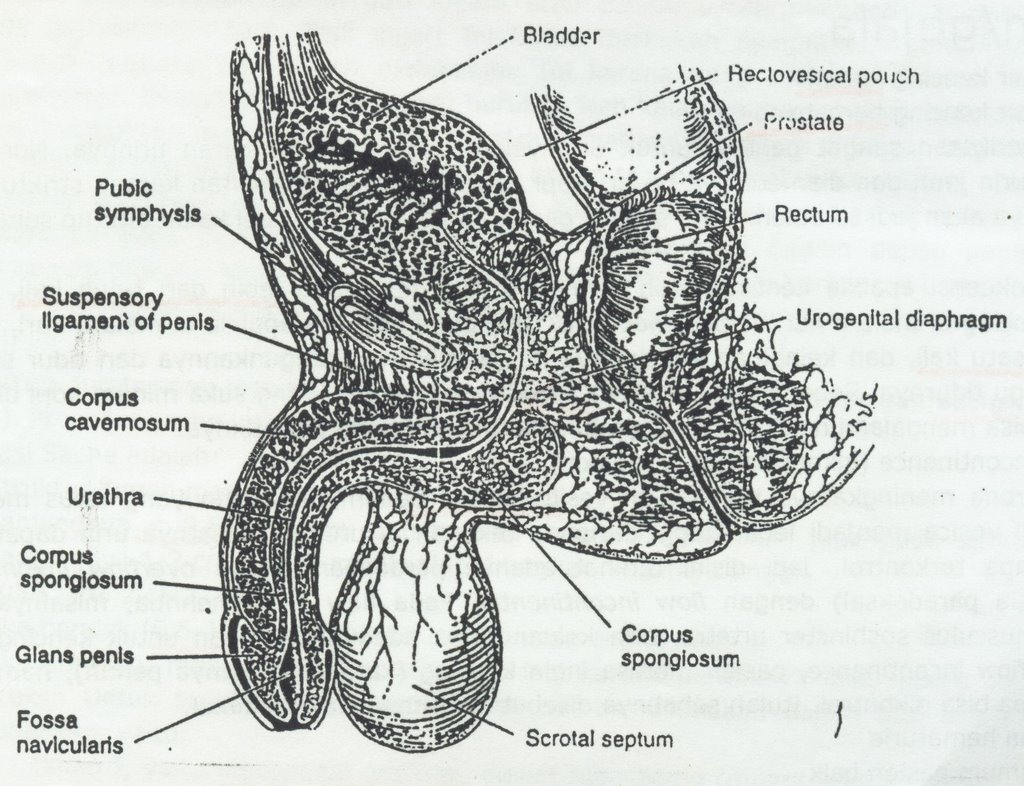
Throughout their lives, men produce testosterone, a male hormone, and small amounts of estrogen, a female hormone. As men age, the amount of active testosterone in their blood decreases, which leaves a higher proportion of estrogen. Scientific studies have suggested that benign prostatic hyperplasia may occur because the higher proportion of estrogen within the prostate increases the activity of substances that promote prostate cell growth.
Another theory focuses on dihydrotestosterone (DHT), a male hormone that plays a role in prostate development and growth. Some research has indicated that even with a drop in blood testosterone levels, older men continue to produce and accumulate high levels of DHT in the prostate. This accumulation of DHT may encourage prostate cells to continue to grow. Scientists have noted that men who do not produce DHT do not develop benign prostatic hyperplasia.
How common is benign prostatic hyperplasia?
Benign prostatic hyperplasia is the most common prostate problem for men older than age 50. In 2010, as many as 14 million men in the United States had lower urinary tract symptoms suggestive of benign prostatic hyperplasia.1 Although benign prostatic hyperplasia rarely causes symptoms before age 40, the occurrence and symptoms increase with age. Benign prostatic hyperplasia affects about 50 percent of men between the ages of 51 and 60 and up to 90 percent of men older than 80.2
In 2010, as many as 14 million men in the United States had lower urinary tract symptoms suggestive of benign prostatic hyperplasia.1 Although benign prostatic hyperplasia rarely causes symptoms before age 40, the occurrence and symptoms increase with age. Benign prostatic hyperplasia affects about 50 percent of men between the ages of 51 and 60 and up to 90 percent of men older than 80.2
Who is more likely to develop benign prostatic hyperplasia?
Men with the following factors are more likely to develop benign prostatic hyperplasia:
What are the symptoms of benign prostatic hyperplasia?
Lower urinary tract symptoms suggestive of benign prostatic hyperplasia may include
- urinary frequency—urination eight or more times a day
- urinary urgency—the inability to delay urination
- trouble starting a urine stream
- a weak or an interrupted urine stream
- dribbling at the end of urination
- nocturia—frequent urination during periods of sleep
- urinary retention
- urinary incontinence—the accidental loss of urine
- pain after ejaculation or during urination
- urine that has an unusual color or smell
Symptoms of benign prostatic hyperplasia most often come from
- a blocked urethra
- a bladder that is overworked from trying to pass urine through the blockage
The size of the prostate does not always determine the severity of the blockage or symptoms. Some men with greatly enlarged prostates have little blockage and few symptoms, while other men who have minimally enlarged prostates have greater blockage and more symptoms. Less than half of all men with benign prostatic hyperplasia have lower urinary tract symptoms.3
Some men with greatly enlarged prostates have little blockage and few symptoms, while other men who have minimally enlarged prostates have greater blockage and more symptoms. Less than half of all men with benign prostatic hyperplasia have lower urinary tract symptoms.3
Sometimes men may not know they have a blockage until they cannot urinate. This condition, called acute urinary retention, can result from taking over-the-counter cold or allergy medications that contain decongestants, such as pseudoephedrine and oxymetazoline. A potential side effect of these medications may prevent the bladder neck from relaxing and releasing urine. Medications that contain antihistamines, such as diphenhydramine, can weaken the contraction of bladder muscles and cause urinary retention, difficulty urinating, and painful urination. When men have partial urethra blockage, urinary retention also can occur as a result of alcohol consumption, cold temperatures, or a long period of inactivity.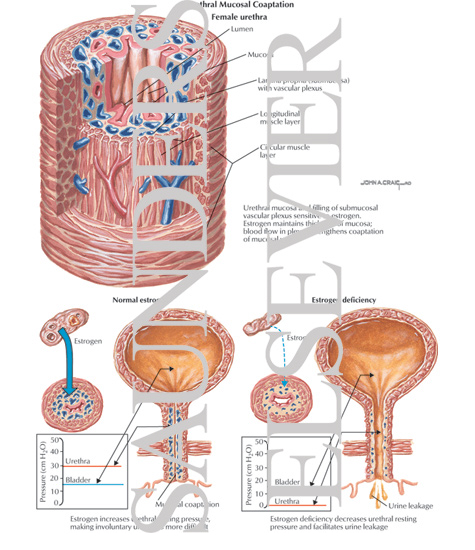
What are the complications of benign prostatic hyperplasia?
The complications of benign prostatic hyperplasia may include
Most men with benign prostatic hyperplasia do not develop these complications. However, kidney damage in particular can be a serious health threat when it occurs.
When to Seek Medical Care
A person may have urinary symptoms unrelated to benign prostatic hyperplasia that are caused by bladder problems, UTIs, or prostatitis—inflammation of the prostate. Symptoms of benign prostatic hyperplasia also can signal more serious conditions, including prostate cancer.
Men with symptoms of benign prostatic hyperplasia should see a health care provider.
Men with the following symptoms should seek immediate medical care:
- complete inability to urinate
- painful, frequent, and urgent need to urinate, with fever and chills
- blood in the urine
- great discomfort or pain in the lower abdomen and urinary tract
How is benign prostatic hyperplasia diagnosed?
A health care provider diagnoses benign prostatic hyperplasia based on
- a personal and family medical history
- a physical exam
- medical tests
Personal and Family Medical History
Taking a personal and family medical history is one of the first things a health care provider may do to help diagnose benign prostatic hyperplasia.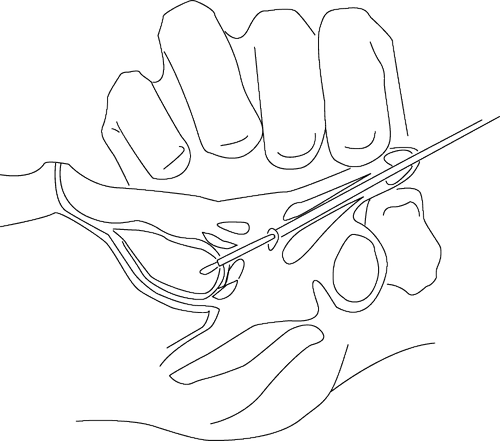 A health care provider may ask a man
A health care provider may ask a man
- what symptoms are present
- when the symptoms began and how often they occur
- whether he has a history of recurrent UTIs
- what medications he takes, both prescription and over the counter
- how much liquid he typically drinks each day
- whether he consumes caffeine and alcohol
- about his general medical history, including any significant illnesses or surgeries
Physical Exam
A physical exam may help diagnose benign prostatic hyperplasia. During a physical exam, a health care provider most often
- examines a patient’s body, which can include checking for
- discharge from the urethra
- enlarged or tender lymph nodes in the groin
- a swollen or tender scrotum
- taps on specific areas of the patient’s body
- performs a digital rectal exam
A digital rectal exam, or rectal exam, is a physical exam of the prostate.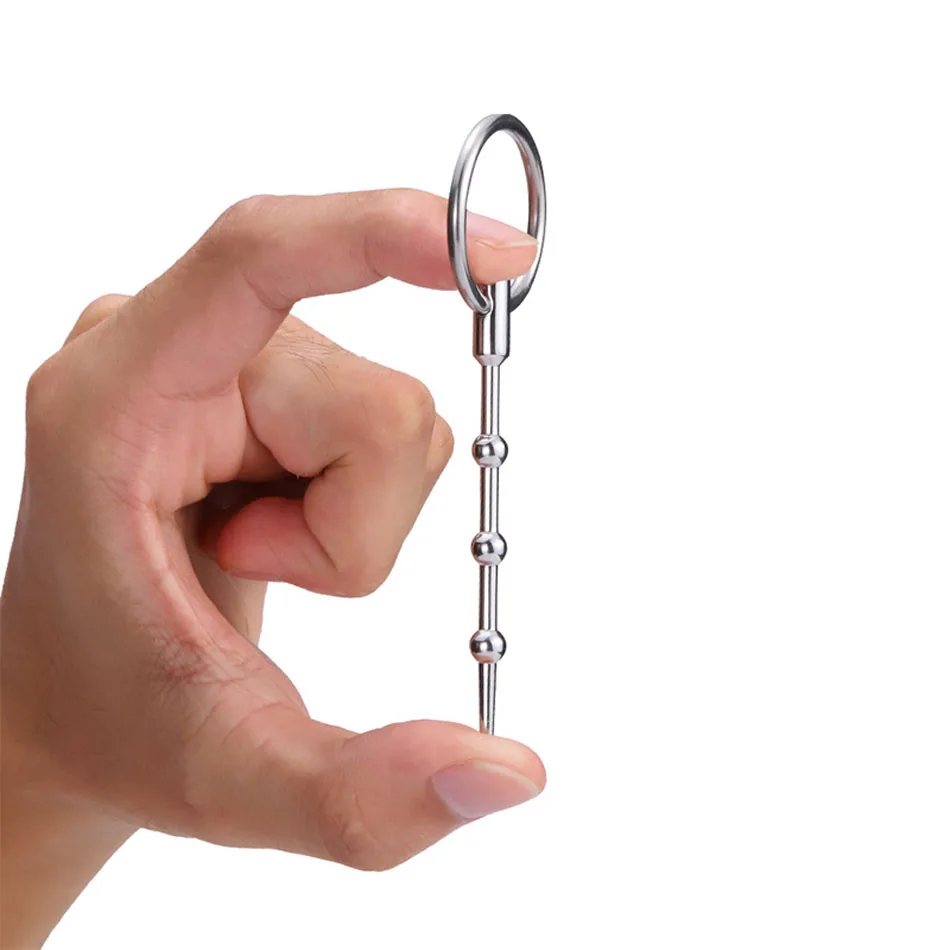 To perform the exam, the health care provider asks the man to bend over a table or lie on his side while holding his knees close to his chest. The health care provider slides a gloved, lubricated finger into the rectum and feels the part of the prostate that lies next to the rectum. The man may feel slight, brief discomfort during the rectal exam. A health care provider most often performs a rectal exam during an office visit, and men do not require anesthesia. The exam helps the health care provider see if the prostate is enlarged or tender or has any abnormalities that require more testing.
To perform the exam, the health care provider asks the man to bend over a table or lie on his side while holding his knees close to his chest. The health care provider slides a gloved, lubricated finger into the rectum and feels the part of the prostate that lies next to the rectum. The man may feel slight, brief discomfort during the rectal exam. A health care provider most often performs a rectal exam during an office visit, and men do not require anesthesia. The exam helps the health care provider see if the prostate is enlarged or tender or has any abnormalities that require more testing.
Many health care providers perform a rectal exam as part of a routine physical exam for men age 40 or older, whether or not they have urinary problems.
Digital rectal exam
Medical Tests
A health care provider may refer men to a urologist—a doctor who specializes in urinary problems and the male reproductive system—though the health care provider most often diagnoses benign prostatic hyperplasia on the basis of symptoms and a digital rectal exam. A urologist uses medical tests to help diagnose lower urinary tract problems related to benign prostatic hyperplasia and recommend treatment. Medical tests may include
A urologist uses medical tests to help diagnose lower urinary tract problems related to benign prostatic hyperplasia and recommend treatment. Medical tests may include
- urinalysis
- a prostate-specific antigen (PSA) blood test
- urodynamic tests
- cystoscopy
- transrectal ultrasound
- biopsy
Urinalysis. Urinalysis involves testing a urine sample. The patient collects a urine sample in a special container in a health care provider’s office or a commercial facility. A health care provider tests the sample during an office visit or sends it to a lab for analysis. For the test, a nurse or technician places a strip of chemically treated paper, called a dipstick, into the urine. Patches on the dipstick change color to indicate signs of infection in urine.
PSA blood test. A health care provider may draw blood for a PSA test during an office visit or in a commercial facility and send the sample to a lab for analysis. Prostate cells create a protein called PSA. Men who have prostate cancer may have a higher amount of PSA in their blood. However, a high PSA level does not necessarily indicate prostate cancer. In fact, benign prostatic hyperplasia, prostate infections, inflammation, aging, and normal fluctuations often cause high PSA levels. Much remains unknown about how to interpret a PSA blood test, the test’s ability to discriminate between cancer and prostate conditions such as benign prostatic hyperplasia, and the best course of action to take if the PSA level is high.
Prostate cells create a protein called PSA. Men who have prostate cancer may have a higher amount of PSA in their blood. However, a high PSA level does not necessarily indicate prostate cancer. In fact, benign prostatic hyperplasia, prostate infections, inflammation, aging, and normal fluctuations often cause high PSA levels. Much remains unknown about how to interpret a PSA blood test, the test’s ability to discriminate between cancer and prostate conditions such as benign prostatic hyperplasia, and the best course of action to take if the PSA level is high.
Urodynamic tests. Urodynamic tests include a variety of procedures that look at how well the bladder and urethra store and release urine. A health care provider performs urodynamic tests during an office visit or in an outpatient center or a hospital. Some urodynamic tests do not require anesthesia; others may require local anesthesia. Most urodynamic tests focus on the bladder’s ability to hold urine and empty steadily and completely and may include the following:
- uroflowmetry, which measures how rapidly the bladder releases urine
- postvoid residual measurement, which evaluates how much urine remains in the bladder after urination
- reduced urine flow or residual urine in the bladder, which often suggests urine blockage due to benign prostatic hyperplasia
Cystoscopy. Cystoscopy is a procedure that uses a tubelike instrument, called a cystoscope, to look inside the urethra and bladder. A urologist inserts the cystoscope through the opening at the tip of the penis and into the lower urinary tract. A urologist performs cystoscopy during an office visit or in an outpatient center or a hospital. The urologist will give the patient local anesthesia; however, in some cases, the patient may require sedation and regional or general anesthesia. A urologist may use cystoscopy to look for blockage or stones in the urinary tract.
Cystoscopy is a procedure that uses a tubelike instrument, called a cystoscope, to look inside the urethra and bladder. A urologist inserts the cystoscope through the opening at the tip of the penis and into the lower urinary tract. A urologist performs cystoscopy during an office visit or in an outpatient center or a hospital. The urologist will give the patient local anesthesia; however, in some cases, the patient may require sedation and regional or general anesthesia. A urologist may use cystoscopy to look for blockage or stones in the urinary tract.
Transrectal ultrasound. Transrectal ultrasound uses a device, called a transducer, that bounces safe, painless sound waves off organs to create an image of their structure. The health care provider can move the transducer to different angles to make it possible to examine different organs. A specially trained technician performs the procedure in a health care provider’s office, an outpatient center, or a hospital, and a radiologist—a doctor who specializes in medical imaging—interprets the images; the patient does not require anesthesia. Urologists most often use transrectal ultrasound to examine the prostate. In a transrectal ultrasound, the technician inserts a transducer slightly larger than a pen into the man’s rectum, next to the prostate. The ultrasound image shows the size of the prostate and any abnormalities, such as tumors. Transrectal ultrasound cannot reliably diagnose prostate cancer.
Urologists most often use transrectal ultrasound to examine the prostate. In a transrectal ultrasound, the technician inserts a transducer slightly larger than a pen into the man’s rectum, next to the prostate. The ultrasound image shows the size of the prostate and any abnormalities, such as tumors. Transrectal ultrasound cannot reliably diagnose prostate cancer.
Biopsy. Biopsy is a procedure that involves taking a small piece of prostate tissue for examination with a microscope. A urologist performs the biopsy in an outpatient center or a hospital. The urologist will give the patient light sedation and local anesthetic; however, in some cases, the patient will require general anesthesia. The urologist uses imaging techniques such as ultrasound, a computerized tomography scan, or magnetic resonance imaging to guide the biopsy needle into the prostate. A pathologist—a doctor who specializes in examining tissues to diagnose diseases—examines the prostate tissue in a lab. The test can show whether prostate cancer is present.
How is benign prostatic hyperplasia treated?
Treatment options for benign prostatic hyperplasia may include
- lifestyle changes
- medications
- minimally invasive procedures
- surgery
A health care provider treats benign prostatic hyperplasia based on the severity of symptoms, how much the symptoms affect a man’s daily life, and a man’s preferences.
Men may not need treatment for a mildly enlarged prostate unless their symptoms are bothersome and affecting their quality of life. In these cases, instead of treatment, a urologist may recommend regular checkups. If benign prostatic hyperplasia symptoms become bothersome or present a health risk, a urologist most often recommends treatment.
Lifestyle Changes
A health care provider may recommend lifestyle changes for men whose symptoms are mild or slightly bothersome. Lifestyle changes can include
- reducing intake of liquids, particularly before going out in public or before periods of sleep
- avoiding or reducing intake of caffeinated beverages and alcohol
- avoiding or monitoring the use of medications such as decongestants, antihistamines, antidepressants, and diuretics
- training the bladder to hold more urine for longer periods
- exercising pelvic floor muscles
- preventing or treating constipation
Medications
A health care provider or urologist may prescribe medications that stop the growth of or shrink the prostate or reduce symptoms associated with benign prostatic hyperplasia:
- alpha blockers
- phosphodiesterase-5 inhibitors
- 5-alpha reductase inhibitors
- combination medications
Alpha blockers. These medications relax the smooth muscles of the prostate and bladder neck to improve urine flow and reduce bladder blockage:
- terazosin (Hytrin)
- doxazosin (Cardura)
- tamsulosin (Flomax)
- alfuzosin (Uroxatral)
- silodosin (Rapaflo)
Phosphodiesterase-5 inhibitors. Urologists prescribe these medications mainly for erectile dysfunction. Tadalafil (Cialis) belongs to this class of medications and can reduce lower urinary tract symptoms by relaxing smooth muscles in the lower urinary tract. Researchers are working to determine the role of erectile dysfunction drugs in the long-term treatment of benign prostatic hyperplasia.
5-alpha reductase inhibitors. These medications block the production of DHT, which accumulates in the prostate and may cause prostate growth:
- finasteride (Proscar)
- dutasteride (Avodart)
These medications can prevent progression of prostate growth or actually shrink the prostate in some men. Finasteride and dutasteride act more slowly than alpha blockers and are useful for only moderately enlarged prostates.
Combination medications. Several studies, such as the Medical Therapy of Prostatic Symptoms (MTOPS) study, have shown that combining two classes of medications, instead of using just one, can more effectively improve symptoms, urinary flow, and quality of life. The combinations include
- finasteride and doxazosin
- dutasteride and tamsulosin (Jalyn), a combination of both medications that is available in a single tablet
- alpha blockers and antimuscarinics
A urologist may prescribe a combination of alpha blockers and antimuscarinics for patients with overactive bladder symptoms. Overactive bladder is a condition in which the bladder muscles contract uncontrollably and cause urinary frequency, urinary urgency, and urinary incontinence. Antimuscarinics are a class of medications that relax the bladder muscles.
Minimally Invasive Procedures
Researchers have developed a number of minimally invasive procedures that relieve benign prostatic hyperplasia symptoms when medications prove ineffective. These procedures include
- transurethral needle ablation
- transurethral microwave thermotherapy
- high-intensity focused ultrasound
- transurethral electrovaporization
- water-induced thermotherapy
- prostatic stent insertion
Minimally invasive procedures can destroy enlarged prostate tissue or widen the urethra, which can help relieve blockage and urinary retention caused by benign prostatic hyperplasia.
Urologists perform minimally invasive procedures using the transurethral method, which involves inserting a catheter—a thin, flexible tube—or cystoscope through the urethra to reach the prostate. These procedures may require local, regional, or general anesthesia. Although destroying troublesome prostate tissue relieves many benign prostatic hyperplasia symptoms, tissue destruction does not cure benign prostatic hyperplasia. A urologist will decide which procedure to perform based on the man’s symptoms and overall health.
Transurethral needle ablation. This procedure uses heat generated by radiofrequency energy to destroy prostate tissue. A urologist inserts a cystoscope through the urethra to the prostate. A urologist then inserts small needles through the end of the cystoscope into the prostate. The needles send radiofrequency energy that heats and destroys selected portions of prostate tissue. Shields protect the urethra from heat damage.
Transurethral microwave thermotherapy. This procedure uses microwaves to destroy prostate tissue. A urologist inserts a catheter through the urethra to the prostate, and a device called an antenna sends microwaves through the catheter to heat selected portions of the prostate. The temperature becomes high enough inside the prostate to destroy enlarged tissue. A cooling system protects the urinary tract from heat damage during the procedure.
Transurethral microwave thermotherapy
High-intensity focused ultrasound. For this procedure, a urologist inserts a special ultrasound probe into the rectum, near the prostate. Ultrasound waves from the probe heat and destroy enlarged prostate tissue.
Transurethral electrovaporization. For this procedure, a urologist inserts a tubelike instrument called a resectoscope through the urethra to reach the prostate. An electrode attached to the resectoscope moves across the surface of the prostate and transmits an electric current that vaporizes prostate tissue. The vaporizing effect penetrates below the surface area being treated and seals blood vessels, which reduces the risk of bleeding.
Water-induced thermotherapy. This procedure uses heated water to destroy prostate tissue. A urologist inserts a catheter into the urethra so that a treatment balloon rests in the middle of the prostate. Heated water flows through the catheter into the treatment balloon, which heats and destroys the surrounding prostate tissue. The treatment balloon can target a specific region of the prostate, while surrounding tissues in the urethra and bladder remain protected.
Prostatic stent insertion. This procedure involves a urologist inserting a small device called a prostatic stent through the urethra to the area narrowed by the enlarged prostate. Once in place, the stent expands like a spring, and it pushes back the prostate tissue, widening the urethra. Prostatic stents may be temporary or permanent. Urologists generally use prostatic stents in men who may not tolerate or be suitable for other procedures.
Surgery
For long-term treatment of benign prostatic hyperplasia, a urologist may recommend removing enlarged prostate tissue or making cuts in the prostate to widen the urethra. Urologists recommend surgery when
- medications and minimally invasive procedures are ineffective
- symptoms are particularly bothersome or severe
- complications arise
Although removing troublesome prostate tissue relieves many benign prostatic hyperplasia symptoms, tissue removal does not cure benign prostatic hyperplasia.
Surgery to remove enlarged prostate tissue includes
- transurethral resection of the prostate (TURP)
- laser surgery
- open prostatectomy
- transurethral incision of the prostate (TUIP)
A urologist performs these surgeries, except for open prostatectomy, using the transurethral method. Men who have these surgical procedures require local, regional, or general anesthesia and may need to stay in the hospital.
The urologist may prescribe antibiotics before or soon after surgery to prevent infection. Some urologists prescribe antibiotics only when an infection occurs.
Immediately after benign prostatic hyperplasia surgery, a urologist may insert a special catheter, called a Foley catheter, through the opening of the penis to drain urine from the bladder into a drainage pouch.
TURP. With TURP, a urologist inserts a resectoscope through the urethra to reach the prostate and cuts pieces of enlarged prostate tissue with a wire loop. Special fluid carries the tissue pieces into the bladder, and the urologist flushes them out at the end of the procedure. TURP is the most common surgery for benign prostatic hyperplasia and considered the gold standard for treating blockage of the urethra due to benign prostatic hyperplasia.
Transurethral resection of the prostate
Laser surgery. With this surgery, a urologist uses a high-energy laser to destroy prostate tissue. The urologist uses a cystoscope to pass a laser fiber through the urethra into the prostate. The laser destroys the enlarged tissue. The risk of bleeding is lower than in TURP and TUIP because the laser seals blood vessels as it cuts through the prostate tissue. However, laser surgery may not effectively treat greatly enlarged prostates.
Open prostatectomy. In an open prostatectomy, a urologist makes an incision, or cut, through the skin to reach the prostate. The urologist can remove all or part of the prostate through the incision. This surgery is used most often when the prostate is greatly enlarged, complications occur, or the bladder is damaged and needs repair. Open prostatectomy requires general anesthesia, a longer hospital stay than other surgical procedures for benign prostatic hyperplasia, and a longer rehabilitation period. The three open prostatectomy procedures are retropubic prostatectomy, suprapubic prostatectomy, and perineal prostatectomy. The recovery period for open prostatectomy is different for each man who undergoes the procedure.
TUIP. A TUIP is a surgical procedure to widen the urethra. During a TUIP, the urologist inserts a cystoscope and an instrument that uses an electric current or a laser beam through the urethra to reach the prostate. The urologist widens the urethra by making a few small cuts in the prostate and in the bladder neck. Some urologists believe that TUIP gives the same relief as TURP except with less risk of side effects.
After surgery, the prostate, urethra, and surrounding tissues may be irritated and swollen, causing urinary retention. To prevent urinary retention, a urologist inserts a Foley catheter so urine can drain freely out of the bladder. A Foley catheter has a balloon on the end that the urologist inserts into the bladder. Once the balloon is inside the bladder, the urologist fills it with sterile water to keep the catheter in place. Men who undergo minimally invasive procedures may not need a Foley catheter.
Foley catheter
The Foley catheter most often remains in place for several days. Sometimes, the Foley catheter causes recurring, painful, difficult-to-control bladder spasms the day after surgery. However, these spasms will eventually stop. A urologist may prescribe medications to relax bladder muscles and prevent bladder spasms. These medications include
- oxybutynin chloride (Ditropan)
- solifenacin (VESIcare)
- darifenacin (Enablex)
- tolterodine (Detrol)
- hyoscyamine (Levsin)
- propantheline bromide (Pro-Banthine)
What are the complications of benign prostatic hyperplasia treatment?
The complications of benign prostatic hyperplasia treatment depend on the type of treatment.
Medications
Medications used to treat benign prostatic hyperplasia may have side effects that sometimes can be serious. Men who are prescribed medications to treat benign prostatic hyperplasia should discuss possible side effects with a health care provider before taking the medications. Men who experience the following side effects should contact a health care provider right away or get emergency medical care:
- hives
- rash
- itching
- shortness of breath
- rapid, pounding, or irregular heartbeat
- painful erection of the penis that lasts for hours
- swelling of the eyes, face, tongue, lips, throat, arms, hands, feet, ankles, or lower legs
- difficulty breathing or swallowing
- chest pain
- dizziness or fainting when standing up suddenly
- sudden decrease or loss of vision
- blurred vision
- sudden decrease or loss of hearing
- chest pain, dizziness, or nausea during sexual activity
These side effects are mostly related to phosphodiesterase-5 inhibitors. Side effects related to alpha blockers include
- dizziness or fainting when standing up suddenly
- decreased sexual drive
- problems with ejaculation
Minimally Invasive Procedures
Complications after minimally invasive procedures may include
- UTIs
- painful urination
- difficulty urinating
- an urgent or a frequent need to urinate
- urinary incontinence
- blood in the urine for several days after the procedure
- sexual dysfunction
- chronic prostatitis—long-lasting inflammation of the prostate
- recurring problems such as urinary retention and UTIs
Most of the complications of minimally invasive procedures go away within a few days or weeks. Minimally invasive procedures are less likely to have complications than surgery.
Surgery
Complications after surgery may include
- problems urinating
- urinary incontinence
- bleeding and blood clots
- infection
- scar tissue
- sexual dysfunction
- recurring problems such as urinary retention and UTIs
Problems urinating. Men may initially have painful urination or difficulty urinating. They may experience urinary frequency, urgency, or retention. These problems will gradually lessen and, after a couple of months, urination will be easier and less frequent.
Urinary incontinence. As the bladder returns to normal, men may have some temporary problems controlling urination. However, long-term urinary incontinence rarely occurs. The longer urinary problems existed before surgery, the longer it takes for the bladder to regain its full function after surgery.
Bleeding and blood clots. After benign prostatic hyperplasia surgery, the prostate or tissues around it may bleed. Blood or blood clots may appear in urine. Some bleeding is normal and should clear up within several days. However, men should contact a health care provider right away if
- they experience pain or discomfort
- their urine contains large clots
- their urine is so red it is difficult to see through
Blood clots from benign prostatic hyperplasia surgery can pass into the bloodstream and lodge in other parts of the body—most often the legs. Men should contact a health care provider right away if they experience swelling or discomfort in their legs.
Infection. Use of a Foley catheter after benign prostatic hyperplasia surgery may increase the risk of a UTI. Anesthesia during surgery may cause urinary retention and also increase the risk of a UTI. In addition, the incision site of an open prostatectomy may become infected. A health care provider will prescribe antibiotics to treat infections.
Scar tissue. In the year after the original surgery, scar tissue sometimes forms and requires surgical treatment. Scar tissue may form in the urethra and cause it to narrow. A urologist can solve this problem during an office visit by stretching the urethra. Rarely, the opening of the bladder becomes scarred and shrinks, causing blockage. This problem may require a surgical procedure similar to TUIP.
Sexual dysfunction. Some men may experience temporary problems with sexual function after benign prostatic hyperplasia surgery. The length of time for restored sexual function depends on the type of benign prostatic hyperplasia surgery performed and how long symptoms were present before surgery. Many men have found that concerns about sexual function can interfere with sex as much as the benign prostatic hyperplasia surgery itself. Understanding the surgical procedure and talking about concerns with a health care provider before surgery often help men regain sexual function earlier. Many men find it helpful to talk with a counselor during the adjustment period after surgery. Even though it can take a while for sexual function to fully return, with time, most men can enjoy sex again.
Most health care providers agree that if men with benign prostatic hyperplasia were able to maintain an erection before surgery, they will probably be able to have erections afterward. Surgery rarely causes a loss of erectile function. However, benign prostatic hyperplasia surgery most often cannot restore function that was lost before the procedure. Some men find a slight difference in the quality of orgasm after surgery. However, most report no difference.
Prostate surgery may make men sterile, or unable to father children, by causing retrograde ejaculation—the backward flow of semen into the bladder. Men flush the semen out of the bladder when they urinate. In some cases, medications such as pseudoephedrine, found in many cold medications, or imipramine can treat retrograde ejaculation. These medications improve muscle tone at the bladder neck and keep semen from entering the bladder.
Recurring problems. Men may require further treatment if prostate problems, including benign prostatic hyperplasia, return. Problems may arise when treatments for benign prostatic hyperplasia leave a good part of the prostate intact. About 10 percent of men treated with TURP or TUIP require additional surgery within 5 years. About 2 percent of men who have an open prostatectomy require additional surgery within 5 years.2
In the years after benign prostatic hyperplasia surgery or treatment, men should continue having a digital rectal exam once a year and have any symptoms checked by a health care provider. In some cases, the health care provider may recommend a digital rectal exam and checkup more than once a year.
How can benign prostatic hyperplasia be prevented?
Researchers have not found a way to prevent benign prostatic hyperplasia. Men with risk factors for benign prostatic hyperplasia should talk with a health care provider about any lower urinary tract symptoms and the need for regular prostate exams. Men can get early treatment and minimize benign prostatic hyperplasia effects by recognizing lower urinary tract symptoms and identifying an enlarged prostate.
Eating, Diet, and Nutrition
Researchers have not found that eating, diet, and nutrition play a role in causing or preventing benign prostatic hyperplasia. However, a health care provider can give information about how changes in eating, diet, or nutrition could help with treatment. Men should talk with a health care provider or dietitian about what diet is right for them.
Clinical Trials
The National Institute of Diabetes and Digestive and Kidney Diseases (NIDDK) and other components of the National Institutes of Health (NIH) conduct and support research into many diseases and conditions.
What are clinical trials, and are they right for you?
Clinical trials are part of clinical research and at the heart of all medical advances. Clinical trials look at new ways to prevent, detect, or treat disease. Researchers also use clinical trials to look at other aspects of care, such as improving the quality of life for people with chronic illnesses. Find out if clinical trials are right for you.
What clinical trials are open?
Clinical trials that are currently open and are recruiting can be viewed at www.ClinicalTrials.gov.
References
[1] Deters LA. Benign prostatic hypertrophy. Emedicine website. http://emedicine.medscape.com. Updated March 28, 2014. Accessed July 29, 2014.
[2] BPH: surgical management. Urology Care Foundation website. www.urologyhealth.org. Updated July 2013. Accessed July 29, 2014.
[3] Enlarged prostate. MedlinePlus website. www.nlm.nih.gov. Updated October 2, 2013. Accessed July 29, 2014.
Prostate problems – NHS
Prostate problems are common, particularly in men aged over 50.
The prostate is a small gland found only in men and trans women. It surrounds the tube that carries urine out of the body (urethra).
The prostate gland produces a thick, white fluid that gets mixed with sperm to create semen.
The prostate gland is about the size and shape of a walnut but tends to get bigger as you get older. It can sometimes become swollen or enlarged by conditions such as:
Prostate enlargement
Prostate enlargement is a very common condition associated with ageing. More than 1 in 3 of all men over 50 will have some symptoms of prostate enlargement.
It’s not known why the prostate gets bigger as you get older, but it is not caused by cancer and does not increase your risk of developing prostate cancer.
An enlarged prostate can put pressure on the urethra, which can affect how you urinate.
Signs of an enlarged prostate can include:
- difficulty starting or stopping urinating
- a weak flow of urine
- straining when peeing
- feeling like you’re not able to fully empty your bladder
- prolonged dribbling after you’ve finished peeing
- needing to pee more frequently or more suddenly
- waking up frequently during the night to pee
See your GP if you notice any problems with, or changes to, your usual pattern of urination.
Simple measures such as reducing the amount you drink (especially tea, coffee and alcohol) before bed can sometimes help control the symptoms. Medicine can help reduce the size of your prostate and relax the muscles of your bladder.
In severe cases that do not get better with medicine, the inner part of the prostate can be surgically removed.
Prostatitis
Prostatitis is where the prostate gland becomes inflamed (swollen). It’s sometimes caused by a bacterial infection, although more often no infection can be found and it’s not clear why it happened.
Unlike prostate enlargement or prostate cancer – which usually affect older men – prostatitis can develop in men of all ages. However, it’s generally more common in men aged over 50.
Symptoms of prostatitis can include:
- pain in the perineum (the area between the anus and scrotum), which is often made worse by prolonged sitting
- pain in the pelvis, genitals, lower back and buttocks
- pain when urinating
- a frequent need to pee
- difficulty urinating, such as problems starting to pee
- pain when ejaculating
See your GP if you have these symptoms.
Prostatitis can be treated using a combination of painkillers and a type of medicine called an alpha-blocker, which can help to relax the muscles of the prostate and bladder neck. It can also sometimes be treated with antibiotics.
Most men will recover within a few weeks or months, although some will continue to have symptoms for longer.
Prostate cancer
In the UK, prostate cancer is the most common type of cancer in men, with more than 45,000 new cases diagnosed every year.
It’s not clear why it occurs, but your chances of developing prostate cancer increase as you get older. The condition mainly affects men over 65, although men over 50 are also at risk.
The risk of developing prostate cancer is also increased depending on your:
- ethnic group – prostate cancer is more common among Black men than in White men, and is least common in Asian men
- family history – having a brother or father who developed prostate cancer under the age of 60 seems to increase your risk of developing it, and having a close female relative who developed breast cancer may also increase your risk of prostate cancer
Early prostate cancer does not usually cause any symptoms.
If the cancer has grown large enough to put pressure on your urethra, the symptoms of prostate cancer can be difficult to distinguish from those of prostate enlargement. They may include:
- needing to pee more frequently, often during the night
- needing to rush to the toilet
- difficulty in starting to pee (hesitancy)
- straining or taking a long time while peeing
- weak flow
- feeling that your bladder has not fully emptied
- blood in urine or blood in semen
You should see your GP if you have these symptoms. It’s much more likely to be prostate enlargement, but it’s important to rule out cancer.
The outlook for prostate cancer is generally good because, unlike many other types of cancer, it usually progresses very slowly. Many men die with prostate cancer rather than as a result of having it.
Prostate cancer therefore does not always need to be treated immediately. Sometimes, it may initially just be monitored and only treated if it gets worse.
Page last reviewed: 15 September 2021
Next review due: 15 September 2024
Urethral Stricture Diagnosis & Treatment | Mount Sinai
If you experience unusual urinary symptoms or have difficulty urinating, you may have a urethral stricture.
The urethra is the tube that carries urine from the bladder to the tip of the penis. It runs through the prostate gland and the bottom of the penis. It is like a long tubular donut with the urine running in the middle of the donut where the hole is and the spongy part of the donut called the urethral sponge. When the urethral lining forms a scar and the hole becomes narrow, making it difficult for urine to pass through, we call it a urethral stricture.
A urethral stricture can cause a very slow urinary stream or make it difficult to completely empty your bladder. It may feel like you have to urinate again right after a trip to the bathroom, or a frequent or urgent need to urinate. This condition may also cause pain, bleeding, and a fear of urinating. Over time, a urethral stricture can cause permanent bladder damage, recurrent urinary tract infections (UTIs), blood in the urine, backup of urine in the kidneys, or kidney damage.
Causes
Often, a urethral stricture results from trauma either from an injury such as a car or bike accident or complications from a medical procedure such as a urethral catheter placement, radiation treatment, or prostate surgery. Occasionally, an infection of the urethra or gonorrhea (a sexually transmitted disease) can cause a urethral stricture.
Diagnosis
To test for a urethral stricture, we might perform a physical exam or one of these diagnostic tests:
- Imaging test with X-rays called a retrograde urethrogram (with contrast dye) to assess the length of the stricture and density of the stricture
- Urine flow test and ultrasound to see how the urine flow is affected by the urethral stricture
- UItrasound to determine if you have more than usual urine left in your bladder after urination
- Cystoscopy, where we gently insert a small, bendable, lubricated fiberoptic scope into your urethra under local anesthesia to see the location and appearance of the stricture
Treatment Options
There are several treatment options for a urethral stricture, depending on how large the blockage is and how much scar tissue you have.
Treatment options for a urethral stricture include:
- Active surveillance, which means closely monitoring the stricture
- Dilating or stretching the stricture to treat the symptoms
- Urethrotomy, or cutting the stricture through a scope
- Urethroplasty, or surgical reconstruction of the urethra; which is often the most effective approach
If you have a light, filmy, short stricture without a lot of scar tissue in the urethral sponge (called spongiofibrosis), we often chose to treat with active surveillance, urethral dilation, or an endoscopic incision of the urethra, rather than a surgical procedure.
If, on the other hand, you have a recurrent stricture or a dense or long stricture, we are more likely to perform a urethroplasty. We perform a urethroplasty in the hospital, under general anesthesia. This delicate procedure generally fixes the urethral stricture as well as any spongiofibrosis. Most of the time, it is a permanent cure. We perform a urethroplasty by removing the part of the urethra with the stricture and scar tissue. If it is a long stricture, we may also add new tissue, such as a graft from the mouth (a buccal mucosal graft) or a flap of skin to help reshape urethra.
After the surgery, you may stay in the hospital for a day or two and have a urinary catheter in for two or three weeks. Most people experience dramatic and long-lasting improvement in urinary symptoms. If you have a lot of scar tissue, it is possible that the stricture may recur.
Each stricture is unique in its length and appearance and each patient is also unique with different needs and circumstances. Because of this we individualize stricture treatment using our extensive experience to make sure you will have the best outcome.
Female Urethral Strictures
Although less common, women can also have urethral strictures and our urologists are internationally recognized as experts in treating this problem. The cause and treatments of female urethral strictures are different from men but for women the urethral scar tissue can also cause bothersome urinary problems such as urinary urgency and frequency, slow stream, needing to push to urinate as well as urinary tract infection, pain, and bleeding.
Typically the scar tissue in the female urethra can be treated with dilation of the urethra or cutting the urethral stricture through a small scope inserted in the urethra. We are one of the few centers in the United States that can offer additional treatments for refractory urethral strictures and often see women with urethral strictures in whom these treatment options have failed. For these recurrent strictures, local skin from around the vagina can be used to reconstruct the urethra. We have had significant success using grafts from the inside of the mouth (buccal mucosal grafts) to repair more complicated strictures.
90,000 Health problems in men 9,0001
2020.10.12
Health problems in men – prostate enlargement
The prostate is a unique male organ. It sits under the bladder and connects to the penis. The prostate produces an alkaline portion of the sperm that prolongs the life of the sperm when they enter the vagina. The prostate has involuntary muscles that contract and help remove semen during ejaculation.
Benign prostatic hypertrophy (enlarged prostate or enlarged prostate) is a common condition in men that is part of the normal aging process.The urethra is the tube that connects the bladder. prostate and allowing urine or semen to leak. In men with an enlarged prostate, it is often difficult to empty the bladder because the urethra is compressed by the tissue of the prostate. Because of the pressure on the urethra, it is difficult for the bladder to create sufficient pressure to overcome this obstruction. Over time, the bladder itself begins to weaken, making it even more difficult to urinate.
Symptoms of an enlarged prostate include:
• Frequency of urination (more frequent urination).
• Urgent urination (feeling like you need to urinate urgently or there is a risk of involuntary urination).
• Difficulty starting to urinate.
• Effort is required to fully urinate
• Reduced outflow and drip of urine.
Treatment for prostate hyperplasia (medication and / or surgery) depends on the severity of the man’s underlying health problems and symptoms. Problems with an enlarged prostate get younger and begin to arise not only in men of respectable age, but also in fairly young people who have reached 40-50 years old.To prevent the problem from getting worse and becoming threatening, immediately contact your urologist if you experience any of the above symptoms.
It is up to you to decide about health and related problems. They accumulate throughout life.
So how do you stay healthy?
A proactive approach to health is an important starting point in maintaining health. Some of the steps are self-explanatory, but the person may need help getting the first step.Learning to recognize that living a healthy life is a lifelong commitment is key to fulfilling longevity. Nothing is perfect, and the ultimate goal is to have more good habits than bad ones. Failure to achieve a goal does not allow you to stop trying to achieve it. A successful effort one day does not give you the right to deviate the next day.
Checklist for promoting healthier lifestyles to live longer and feel healthier:
• Stop smoking
• Try to maintain a normal body weight.
• Get involved in physical activity every day.
• Follow the principles of healthy eating.
• Maintain good control of blood pressure, cholesterol, and diabetes.
• Perform routine medical care and examinations annually.
• Do the recommended screenings for prostate and colon cancer 9020.
• Check your own testicles.
• Be mentally active
• Maintain close relationships with friends.
90,000 Problems with the urethra in men: how to avoid the lifelong “tube in the side”
Changes in urination in men often appear gradually, so they, not paying attention to the symptoms, get used to the inconvenience: the urge to use the toilet becomes more frequent, the jet weakens, there is always a feeling of a full bladder. With these “bells” you must definitely go to the urologist. Because a stricture, or narrowing of the urethra, can be dire.Vita Melne, a surgeon-urologist of the Riga 1st Hospital, told the portal Riga.lv how to treat it.
Continuation of the article is under advertising
Advertising
Disease of the Kings
The causes of urinary problems can be different.One of them is a benign enlargement of the prostate, observed in men after 50. Moreover, the older the man, the more likely he has prostatic hyperplasia. But the narrowing of the urethra, which is observed in men, regardless of age, also leads to the occurrence of similar problems.
The reasons are different – the consequence of inflammation of the urinary tract, catheterization of the urethra (which occurs during instrumental examination of the lower urinary tract or during operations), as well as after fractures of the pelvic bones, when the urethra is injured or even completely ruptured.However, sometimes the cause of this disease remains unclear.
Narrowing of the urethra in men is not a rare diagnosis: it occurs in about one to two percent of adult men. Peter I died of complications of this disease. The cause of the urethral stricture may be an infection, a genetic predisposition, or some kind of surgery. The stricture interferes with the normal emptying of the bladder, the constant excess pressure in which begins to greatly interfere with the work of the kidneys, which sometimes leads to the development of renal failure, pyelonephritis.
Symptoms of narrowing of the canal, which should alert
- Feeling of obstruction during urination.
- Marked weakening of the urine stream (thin stream, decreased urine pressure).
- Feeling of insufficient emptying of the bladder, the need for frequent urination.
- Pain in the lower abdomen.
- The need to wait a long time before urinating and the need to tighten the abdominal muscles to urinate.
- Intermittent jet.
If you feel these symptoms, it is better to see a specialist. Often, to save lives, such men are urgently made a cystostomy (tube with a bag).
The groom wanted to commit suicide … the operation saved
The doctor told the story of a 36-year-old man who was about to get married and, having learned that he had taken too long with an illness and now had to live with a tube in his stomach and a bag for collecting urine on his belt , almost committed suicide.
“Before that, a man for more than five years had problems with urination, strange for his age, accompanied by growing pains in the lower abdomen.But the man thought: he probably caught a cold, it will pass. When the patient nevertheless turned to the urologist and was examined, got into our clinic and we examined his disease, it became clear that the blame was the stricture of the urethra: cicatricial narrowing of the urethra, “she explained. are similar to those that occur in patients with benign prostatic hyperplasia, often the disease is treated as hyperplasia; there are no results.Often a stricture is discovered by chance when a patient has acute urinary retention – the patient suddenly cannot go out of small need and the first aid is the installation catheter.And when the catheter cannot be inserted, the stricture of the urethra is ascertained. It is then for emergency help that a cystostomy is formed – a tube is inserted into the abdomen to ensure the release of urine into the bag-urine collector.
Rarely used but effective method
Not only do you have to live with a foreign body, but a new problem also arises: the impossibility of sexual activity. In addition, patients are tied to a medical facility, where the bag is changed every 6-8 weeks.
“You can live with a tube in your stomach.However, for many men of all ages, this situation becomes a real torment, leading to psychological disorders. As a urologist, I was always looking for an answer to the question: how can you help these patients? And I decided to learn from one of the few “magicians” who practices a new surgical method to eliminate defects such as narrowing of the urethra in men – surgeon Paksi Satyagraha from the Syaiful Anwar hospital in Malang, Indonesia, and from Professor Margit Fish (Margit Fish) in Germany, at the University Medical Center Hamburg-Eppendorf, “says the surgeon.
Margit Fish took Dr. Melne for an internship at her urology department. The doctors operated together for three months. Then Dr. Melne began to operate on men with strictures at the Riga 1st Hospital. And then she continued her studies in Indonesia, with Dr. Paxi Satyagrahi.
The young man we started our story about was successfully operated on by Dr. Melne together with the Indonesian doctor Paksi Satiagraha. “He not only recovered, but also successfully married after the operation.That is, the sexual function has also recovered.
How the cheek can help
Dr. Vita Melne in Riga 1st uses the most modern method of urethral plastics – transplantation of the mucous membrane from the patient’s cheek to the site of stricture dissection. This avoids curvature of the organ and reduces the likelihood of re-narrowing. And the mucous membrane of the cheek is restored very quickly.
The operation lasts about 2-4 hours depending on the chosen method of operation, length of stricture, localization and etiology, and after two to three weeks the catheter is removed from the urethra and spontaneous urination is restored.The latest equipment is used.
According to Vita Melne, her patients are not only young people. She had a patient, a 90-year-old grandfather, who did not want to celebrate his anniversary with a straw in his side. The operation was very successful: within a year he came for examinations, then he said that he was healthy.
90,000 Urethritis in men and women, symptoms and treatment of urethritis
What is urethritis?
Urethritis is an inflammation of the urethra, urethra, which occurs in both men and women.However, in men (due to the structural characteristics of the male genitourinary system), the disease manifests itself acutely and noticeably, while in women it can sometimes proceed with practically no symptoms. Given such a circumstance as the ability of the disease to develop after sexual contact with a sick partner, this poses a serious threat of urethritis in male partners.
This disease, unpleasant but not dangerous (at first glance), can create serious problems in the form of complications.Without treatment, urethritis in men is complicated by damage to the seminal glands, prostatitis, cystitis, and is a common root cause of male infertility and impotence. In women, cystitis, pyelonephritis and other diseases of the genitourinary system can become complications of urethritis.
To avoid such problems, there is no other way out but to carry out timely, adequate and systemic treatment of the disease. Moreover, if a genital infection became the cause of urethritis, all sexual partners of the patient must be treated.
Symptoms and causes of urethritis
Most often, urethritis makes itself felt by such signs as a burning sensation and pain in the urethra. After a while, a discharge of pus appears from the urethra, abundant or scarce, sometimes differing in color. Regardless of the type of infection that caused the disease, the symptoms of urethritis are very similar. The difference can only be in the intensity of pain and the abundance of purulent discharge.
Signs of specific urethritis usually appear soon after infection during intercourse with a sick partner.
Nonspecific urethritis, which is usually caused by opportunistic microorganisms, can flare up when the body is exposed to adverse external influences, such as:
- Injury of the walls of the urethra. Such an injury can occur with mechanical damage to the penis, be the result of unskilled actions in the diagnosis or treatment of diseases of the genitourinary sphere (taking a smear, catheterization, and so on), occur when sand and stones pass through the urethra (with urolithiasis).Any damage to the walls of the urethra “opens the gate” of infection and can cause the development of urethritis in men;
- An improper diet, including an excessive amount of spicy, acidic, irritating food, alcohol abuse can cause chemical damage to the walls of the urethra, after which the mechanism of development of inflammation works in the same way as with mechanical trauma;
- Excessive physical activity, lack of rest, systematic fatigue can reduce the level of immune defense of the body and the urethra in particular;
- Violations of sexual hygiene, irregularity of sexual intercourse;
- Incorrect drinking regime.An important factor in the body’s defense against infections of the genitourinary system, and against urethritis in particular, is regular urination. In this case, pathogens are simply washed off the walls of the urethra. With a lack of fluid intake, with disorders or delayed urination, these bacteria have the ability to multiply unhindered in the urethra, causing inflammation;
- Chronic inflammatory processes in the body can become “suppliers” of infection to the urethra.The causative agents of the inflammatory process can be delivered there with the blood flow from any part of the body;
pain when urinating;
pronounced deviation or bifurcation of the urine stream;
difficulty urinating, feeling of incomplete emptying;
weak stream of urine;
complete urinary retention.
The risk of developing infections of the bladder and, ascending, of the kidneys increases. Renal failure is a threat to the entire body, often ends with a large-scale surgical intervention.
Violation of the outflow of urine provokes the formation of stones.
If urination is impaired, general urethral dysfunction gradually develops, not only at the site of the stricture, but throughout the entire length of the canal. There is no proper pressure, the walls atrophy, the passage narrows, stenosis of new areas occurs. With a total narrowing of the canal, urine can only be diverted through a catheter directly from the bladder.
Incomplete emptying of the bladder against the background of difficulty urinating leads to frequent urge.At work and at night, this causes noticeable discomfort, the schedule of the day and sleep patterns are disrupted.
Urethral stricture in men reduces the quality of sex life and sexual health. Ejaculation becomes painful, the ejaculate may be thrown into the bladder, which leads to the impossibility of fertilization. Urine can also enter the excretory ducts of the prostate gland, which provokes prostatitis and more serious problems – prostate adenoma.
Endoscopic treatment (internal urethrotomy) is one of the most commonly used methods in modern practice.The technique is minimally invasive, avoiding open surgery. It is used in cases where the size of the stricture does not exceed 1 cm.
Open surgery with excision (removal) of the damaged area and stitching of healthy tissue end-to-end.
Urethroplasty. A type of open operation used for the resection of long strictures (up to 3-4 cm). In this case, the affected areas are excised and replaced with healthy tissue borrowed from other parts of the patient’s body.The mucous membrane of the cheeks, the skin of the foreskin, etc. are used as a graft.
do not overgrow with salts and mucous deposits;
do not require additional treatment after the procedure;
serve for several years, do not shift.
- Chlamydia
- Gonorrhea
- Urethritis
- Trichomoniasis (trichomoniasis)
- Ureaplasmosis
- Prostatitis
- Cystitis
- Stones in the prostate and bladder
- Andrology (surgical treatment of erectile dysfunction and Peyronie’s disease, plastic surgery of the external genital organs)
- Infertility (performing testicular biopsy or microsurgical varicocelectomy)
- Reconstructive-plastic urology (plastic surgery for hydronephrosis, strictures of the ureter and urethra, surgical treatment of urogenital fistulas, urinary incontinence in men)
- Neuro urology (treatment of neurogenic dysfunction of the lower urinary tract)
- Urogynecology (surgical treatment of urinary incontinence in women)
- Benign prostatic hyperplasia (adenoma)
- Inflammatory diseases of the genitourinary system (pyelonephritis, prostatitis, cystitis, orchiepididymitis)
- Urolithiasis (extracorporeal lithotripsy, minimally invasive endoscopic treatment of urolithiasis)
- Traumatic injuries of the genitourinary system
- Prostate cancer (radical prostatectomy)
- Kidney cancer (radical nephrectomy, kidney resection)
- Bladder cancer (transurethral resection of the bladder tumor, radical cystectomy with various urinary diversion options)
- Testicular cancer (radical orchiectomy, retroperitoneal lymphadenectomy)
- Passport of a citizen of the Russian Federation
- Compulsory medical insurance policy of the Russian Federation
- Referral from the local polyclinic
- Research results
90,076 90,000 causes and main symptoms of the disease
Urethral stricture is a common urological disorder. Narrowing of the urethra is more common in men than in women. Pathology, as a rule, is localized closer to the external opening. The disease is predominantly acquired, about half of the cases are post-traumatic stenoses, the second part of strictures are manifested as a consequence of chronic inflammation.
Stricture of the distal urethra (adjacent to the bladder neck) is more common in childhood, and the disease may be congenital.
Causes of urethral stricture
The disease occurs against the background of injuries, operations, diseases, radiation therapy. Any factor that injures the epithelial layer of the urethra can cause stricture.
Post-traumatic strictures include urethral strictures that have arisen against the background of fractures of the pelvic bones (industrial, domestic accidents, car accidents).Narrowing of the lumen of the urethra can occur after surgery and other medical procedures (catheterization, sampling, brachytherapy, stone removal, transurethral resection, etc.). Circumcision of the foreskin can also cause illness.
In addition, the reasons for the development of stenosis include inflammatory diseases, in particular – Lichen Sclerosus (lichen sclerosus), as well as infections of the genital area that cause urethritis. With timely treatment of the latter, as a rule, no consequences are observed.
The onset of urethral stricture in women is possible after radiotherapy prescribed for oncology in the small pelvis. Intensive irradiation of this area leads to the development of adhesions of tissues of various organs, including the organs of the genitourinary system.
In men, urethral stricture is the second most common cause of urinary difficulty after prostate adenoma.
Symptoms of urethral stricture
Symptoms are not expressed until the moment when the presence of strictures begins to qualitatively affect urination.The narrowing of the canal lumen always occurs progressively. In the absence of proper attention to themselves, patients do not pay attention to some discomfort in the initial stages of the disease.
With a significant decrease in the lumen of the urethra, the following symptoms may appear:
With pronounced narrowing, infections of the genital tract often develop, including prostatitis in men, which is associated with infection of urine with its constant delays. Whatever the symptoms, for any problems it is necessary to see a doctor to determine the cause and nature of the disease.
Why is urethral stricture dangerous
Patients, especially men, often postpone the visit to the urologist “until the last”.At the same time, the presence of strictures is quite dangerous: it affects the health of the genitourinary sphere, as well as the quality of life, and the psychological state of the patient as a whole.
Methods for the diagnosis of urethral stricture
The initial diagnosis of possible stenosis is carried out on the basis of the data reported by the patient at the first visit to the doctor. If the complaints are classified as symptoms characteristic of urethral stricture, extended diagnostics are performed, which includes physical, X-ray, endoscopic, ultrasound, and other types of examinations.
Anamnesis collection
At the initial appointment, the urologist will collect anamnesis, perform, if possible, a detailed analysis of the underlying causes and circumstances that could cause urethral stricture.
Laboratory diagnostics
If there is a suspicion of an infectious origin of the stricture, the patient is sent to take smears from the urethra, a general urine test, and urine for bacterial culture.This will allow you to obtain data on the presence or absence of infectious or sexually transmitted diseases, inflammatory processes, to detect any deviations from the norm of analyzes, and also to select antibiotics for the treatment of the isolated flora, if there is a problem.
Uroflowmetry
Evaluation of urine flow rate or uroflowmetry refers to physical screening procedures that allow a fairly clear diagnosis of the disease.The characteristic plateau phase on the graph, as well as the lengthening of urination time, indicate the possible presence of a stricture.
Ultrasound examinations
X-ray
X-rays help identify urethral diverticula, valves, and false passages, which can also affect the rate and quality of urination.In addition, using an X-ray, he diagnoses stones in the bladder or the lumen of the urethra, the presence of which is directly related to the difficulty of urinating.
More information about the diagnostic method
Cystoscopy
Ureteroscopy and cystoscopy refer to endoscopic examination methods and are used to access the narrowing zone of the canal lumen, visually assess the possible causes of stenosis, and harvest tissue for morphological examination.
More about the diagnostic method
To accurately diagnose the disease, make an appointment with the specialists of the Family Doctor network.
Methods for the treatment of urethral stricture
Treatment can be conservative (bougienage, i.e. forced expansion of narrowed areas) and surgical. The choice of treatment method depends on the type of obstruction (deformation of the lumen) of the urethra:
In cases where the length of the constrictions is large, or the treatment already carried out has not yielded a result and a relapse is observed, the patient is recommended to independently carry out catheterization every day. This way of urinating is very uncomfortable, which once again emphasizes the importance of a timely visit to a doctor.
Treatment in the clinic Family Doctor
The urological clinic of the Hospital Center of the Family Doctor network of clinics uses an innovative non-traumatic method of treating patients diagnosed with urethral stricture.
Allium stents, which have no analogues in Russia, are used to restore the lumen of the urethra. Fundamentally new devices are safe, immediately and with minimal intervention, they can restore the lumen of the urethra.
Unlike previous versions, Allium stents:
Stents are adaptable, provide comfort and improve the patient’s quality of life. Stenting is performed in an outpatient setting, the operation takes little time and is very well tolerated.
Make an appointment with your doctor even if you feel a little worse. Professional medical care is the basis for maintaining health and preventing complications.
Do not self-medicate.Contact our specialists who will correctly diagnose and prescribe treatment.
Rate how helpful the material was
Thanks for rating
Pain in the urethra / Your doctor, Kremenchuk, Ukraine
The main causes of pain in the urethra in both men and women are the following diseases:
1. Chlamydia – Urogenital (genitourinary) chlamydia is classified as an STD. This is an infectious disease in which chlamydia damages the genitals and urinary tract of a person.
2. Gonorrhea is a sexually transmitted infection caused by gonococci.
3. Urolithiasis – a disease manifested by the formation of stones in any part of the genitourinary system. So with stones in the bladder, pain occurs in the lower abdomen, which can be given to the perineum, genitals.Pain in the urethra occurs when moving and when urinating. Another manifestation of bladder stones is increased urination. Sharp unreasonable urges appear when walking, shaking, physical exertion. During urination, the so-called symptom of “stuck” can be noted – unexpectedly, the stream of urine is interrupted, although the patient feels that the bladder is not completely emptied, and urination resumes only after a change in body position.
4. Urethritis is an inflammation of the urethra, the main manifestation of which is discharge from it and pain during urination.Urethritis occurs in both men and women. Pain in the urethra can occur both periodically – only when urinating, or be permanent. Constant pain in the urethra is often a symptom of colliculitis (a type of urethritis).
5. Trichomoniasis is a disease caused by Trichomonas. Their main habitat in the male body is the prostate gland and seminal vesicles, in the female – the vagina. However, when it first enters the body, Trichomonas always cause urethritis, and, as a result, pain in the urethra.Infection occurs through sexual contact with a patient or carrier of the infection. In women, trichomoniasis is manifested by inflammation of the vagina (colpitis), the cervix (cervicitis), and glands that secrete the lubricant necessary for intercourse. In men, the most common inflammation of the urethra (urethritis) and the prostate gland (prostatitis). 6. Prostatitis is an inflammation of the prostate tissue, its edema. This is the most common urological disease among men aged 20-50 years. Previous or existing infections play an important role in the development of prostatitis.Clinically significant are chlamydia, ureplasma, mycoplasma, herpes virus, Trichomonas, gonococcus, Candida fungus.
7. Cystitis is an inflammation of the bladder. Cystitis is one of the most common inflammatory diseases of the genitourinary organs. Mostly women suffer from cystitis.
8. Pain in the urethra can be the result of chemical, traumatic or infectious factors.
Make an appointment
90,000 Male health weakness: how to treat urethral stricture | Healthy life | Health
Dam on channel
The urethra – the urethra – in women is only 3-6 cm long, and in men – about 30.This “inequality” explains the fact that women acquire urinary infections much more easily than men. However, men are more likely to carry sexually transmitted infections that persist longer in their long urethra. Without adequate treatment, the infection penetrates into the deep layers, which leads to its narrowing. This is where the serious problems begin. It is no coincidence that a man’s urethra is called the Achilles heel of the stronger sex.
But if only children have not heard about prostatitis today, then only the patients themselves and their attending physicians can tell about the problems with the urethra.It is still not customary to speak loudly about urinary disorders.
In addition to chronic infections, trauma is the most common cause of stricture in men. Usually a ruptured urethra is the result of a fracture of the pelvic bones or falling onto the perineum. Recently, more and more patients receive damage to the urethra as a result of the introduction of various kinds of drugs into the canal and improper conduct of invasive medical procedures (catheterization, laser therapy, bougienage, etc.).
The vicious circle
The stricture interferes with the normal emptying of the bladder.A very difficult conclusion follows from this simple statement: a chronic violation of emptying leads to an increase in the amount of residual urine that remains in the bladder. Its delay gradually leads to a decrease in sensitivity and a decrease in the contractility of the bladder. Constant excessive pressure in it does not allow the kidneys to work effectively, which leads to the extinction of their function and the development of renal failure. To save the life of such patients, a cystostomy is performed – an operation in which a hole is formed in the lower abdomen and a drainage tube is installed so that urine can flow out into the urine bag.
At best, this nightmare is not eternal and with a cystostomy tube, in anticipation of a life-saving operation, a person walks for 3-4 months. But the fact is that the cystostomy is the “gateway” for a new urinary infection and the situation can turn into a “vicious circle”.
Non-iron stream
The symptoms of stricture are quite simple and difficult not to notice: a weak stream, the need for straining, intermittent urination and a feeling of incomplete emptying of the bladder.These symptoms appear rather quickly: after an injury, within 1–3 weeks, and in case of infectious inflammation – by the end of the 2–3rd month from the onset of the disease.
Similar symptoms are observed in adenoma, prostate cancer, prostatitis and some neurological diseases. The most common causes of neurogenic urinary disorders are trauma and diseases of the spine with damage to the spinal cord, nervous diseases with damage to the central nervous system.
By the way, urethral stricture can also cause the so-called secondary prostatitis, which is a consequence of the throwing of urine into the ducts of the prostate gland.It is clear that without the elimination of urethral stricture, as the main cause of the disease, the treatment of such prostatitis can last forever.
Today, the latest medical imaging systems (multislice computed tomography, 3D echourethrography, magnetic resonance urography) help to accurately diagnose these diseases. Thanks to modern technologies, it has become possible to obtain virtual endoscopic images of the urethra and bladder without instrumental penetration into the patient’s body.
There is a way out!
Until recently, medicine could offer patients with urethral stricture only an operation called anastomotic urethroplasty, which was first performed in 1912 by the famous Russian surgeon B.N. Holtsov. The essence of the operation is that an incision is made in the skin and soft tissues at the site of the stricture, the narrowed portion of the urethra is excised (removed), and the unchanged ends of the urethra are sutured together.
It is clear that the longer the stricture, the larger the section of the urethra needs to be removed, which means that its length will decrease by exactly that amount.Therefore, one of the most adverse consequences of such an operation is the shortening and curvature of the penis. And the likelihood of relapse hovers around 35%.
In the 70s of the last century, endoscopic, and therefore organ-saving, surgery called internal optical urethrotomy became widespread. Technically, the operation consists in dissecting the constriction from the inside. Unfortunately, this method does not allow removing the scar-altered portion of the narrowed urethra. Therefore, relapses of strictures after endoscopic treatment can be observed in 80% of patients.
Today in Russia, the tactics of transplanting the mucous membrane from the cheek of the patient himself to the site of stricture dissection has begun. This allows you to avoid curvature and reduce the likelihood of re-narrowing to 12%, and according to some reports, even up to 5%. The mucous membrane of the cheek is restored very quickly. The operation lasts a maximum of one and a half hours, after 2-3 weeks the catheter is removed from the urethra and spontaneous urination is restored.
Repeatedly operated patients sometimes need a two-stage operation.The first operation involves removing the stricture, surrounding scar tissue and transplanting the mucosa. At the second stage, after 2-3 months, a new urethra is formed.
But this is not the latest achievement of reconstructive surgery. Operations are already underway when artificial materials and tissues obtained by the method of tissue engineering are transplanted. Under sterile conditions, laboratories on special matrices grow the patient’s own cells, which are used during surgery to replace scar-altered and non-viable tissues of the urethra or penis.This is not medicine for the distant future. All these methods of treatment are used in Russia today.
Most common causes of urethral stricture
Injury-related
● Injury or injury to the penis with damage to the hanging urethra
● Injury or injury to the perineum
● Injury of the pelvis with fracture of the pelvic bones
● Medical instrumental procedures on the urethra: prolonged (more than 1 month) placement of the catheter in the urethra, urethral bougie dissection of narrowing of the urethra (blind and optical urethrotomy), removal of stones or foreign bodies
● Self-harm of the urethra after the introduction of foreign bodies into it during masturbation
● Unsuccessful operations on the penis and urethra
● Operations on the prostate gland
Associated with inflammation of the urethra
● Infectious inflammation of the urethra: gonorrhea, tuberculosis, non-gonococcal urethritis
● Chemical damage to the urethra (burns) by substances used for the purpose of treatment or self-treatment: silver compounds, chlorhexidine solution, concentrated solution of potassium permanganate, dimethylsulfoxide 2, alcohol, kesp3000 degenerative-dystrophic processes: lichen sclerosus or xerotic obliterating balanitis
See also:
90,000 First Gradskaya Hospital named after N.I. Pirogova
Today urology is a multifaceted and constantly developing branch of medicine. Problems of the genitourinary system arise not only among the male population. For example, many women suffer from bladder infections or incontinence. The urologist is engaged in the diagnosis, treatment and monitoring of disorders of the urinary tract and external genital organs. They turn to him on issues related to the kidneys, ureter, urethra, bladder, prostatitis (problems associated with impotence).
Recently, the following subdivisions of urology have received significant development:
Activities
General urology remains a highly demanded branch of the medical discipline, including the treatment of common diseases such as:
Oncourology today is an independent section that deals with the treatment of the most difficult group of patients suffering from such diseases:
In medical practice, endoscopic, X-ray endosurgical and laparoscopic methods of surgical treatment of urological diseases have become firmly established, reducing surgical trauma, which in turn leads to rapid patient rehabilitation and a reduction in the length of hospital stay.
For the team of the urological department of the GKB No. 1 named after NI Pirogova urology is not just a medical discipline that studies the etiology, pathogenesis, diagnosis and treatment of diseases of the genitourinary system, it is also an individual approach to each specific patient and clinical case of the disease. The urologists of our department are ready to provide highly specialized assistance to patients with even the most complex urological diseases, to correct other people’s mistakes and come to the rescue, it would seem, in a hopeless case.
How to get to a specialist
For consultation and treatment, a minimum set of documents is required:
If you want to receive out-of-line treatment or superior comfort services, there are paid services for you in any department of the hospital, both outpatient and inpatient.

 Mayo Clinic, Rochester, Minn. June 28, 2017.
Mayo Clinic, Rochester, Minn. June 28, 2017.
 It happens when the sphincter muscle no longer works.
It happens when the sphincter muscle no longer works. This is often caused by an enlarged prostate gland or a narrow urethra. It may also happen because of weak bladder muscles.
This is often caused by an enlarged prostate gland or a narrow urethra. It may also happen because of weak bladder muscles. This can help you and your doctor find the best treatment for you.
This can help you and your doctor find the best treatment for you. But this isn’t common.
But this isn’t common.

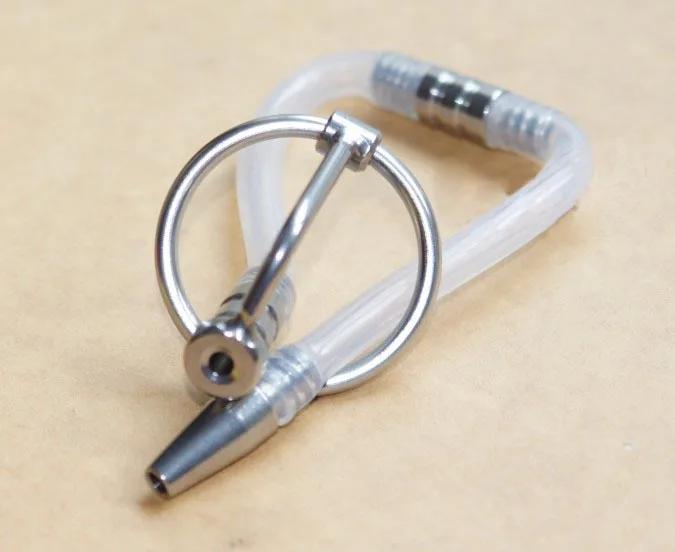



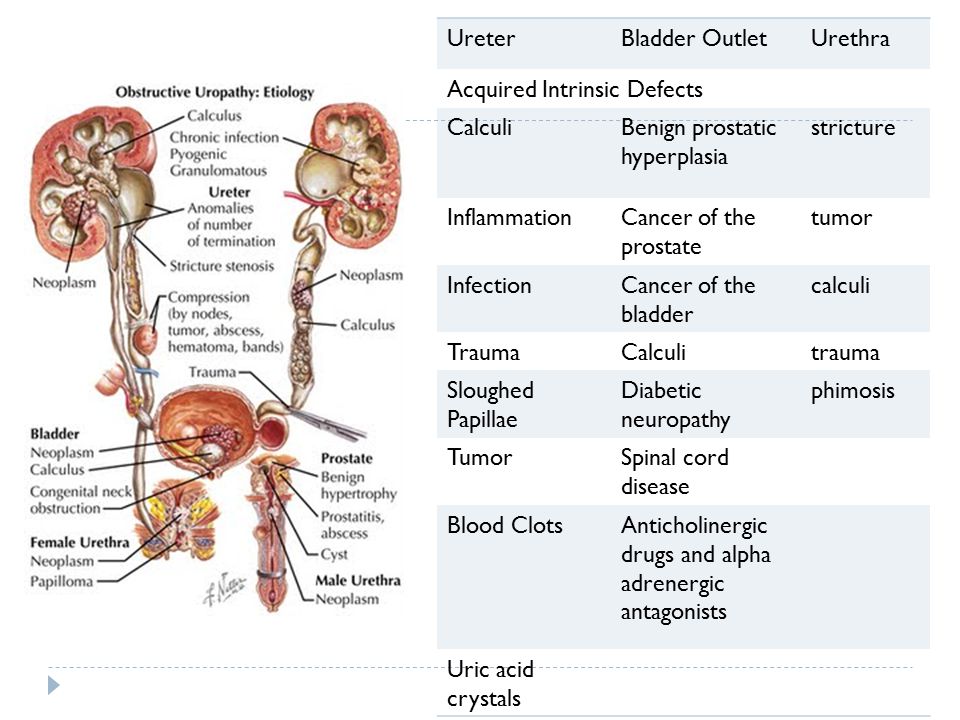

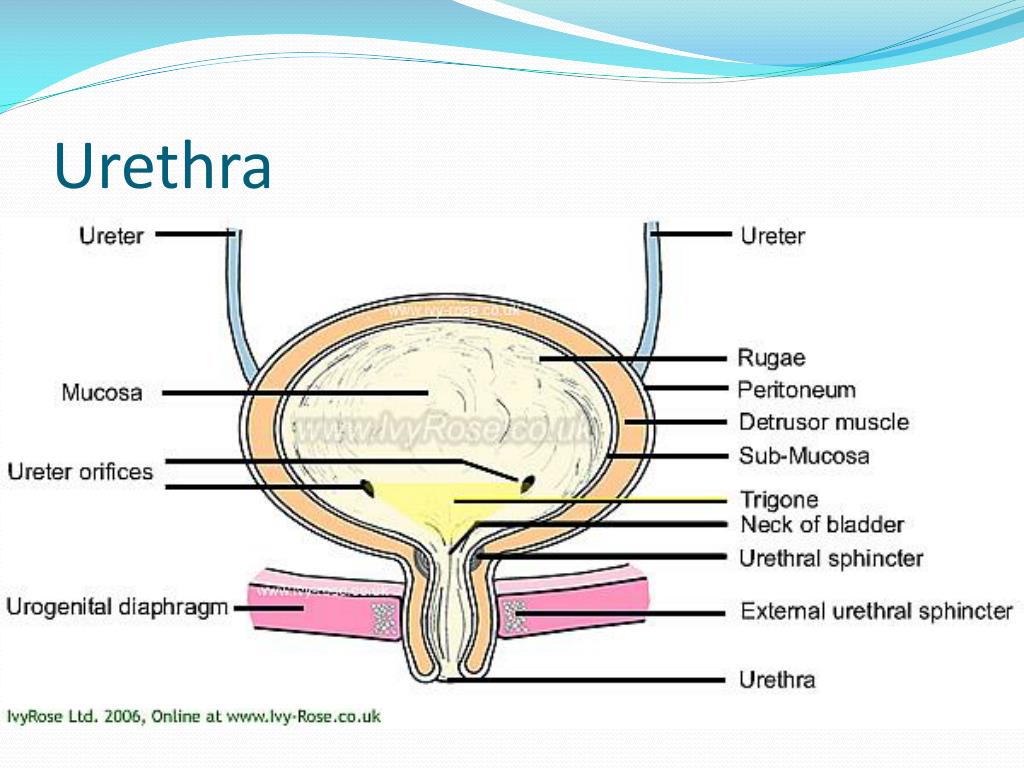 This helps you improve control.
This helps you improve control.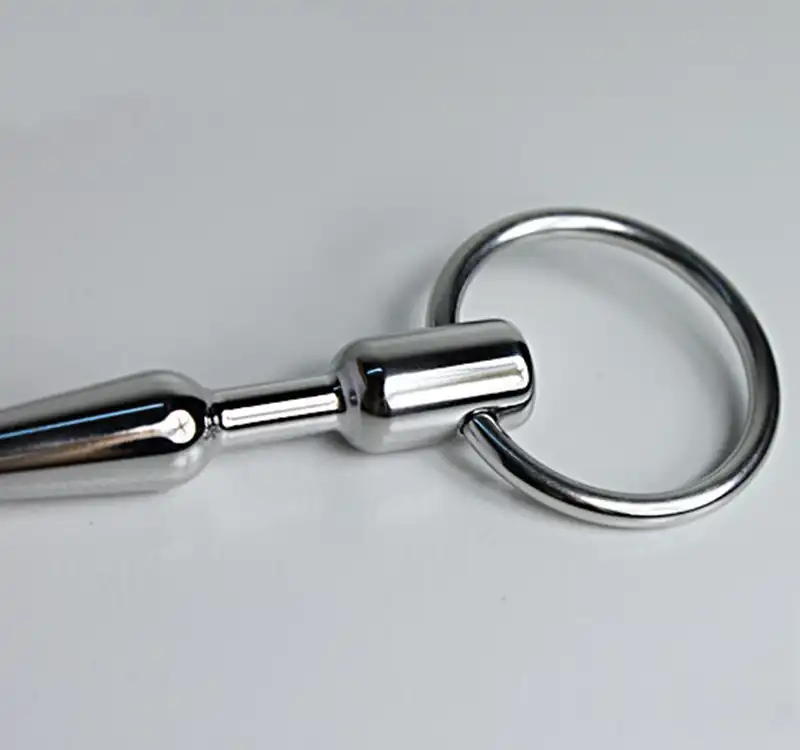 The condom, placed over the penis, keeps the tube in place. The tube allows the urine to drain out.
The condom, placed over the penis, keeps the tube in place. The tube allows the urine to drain out.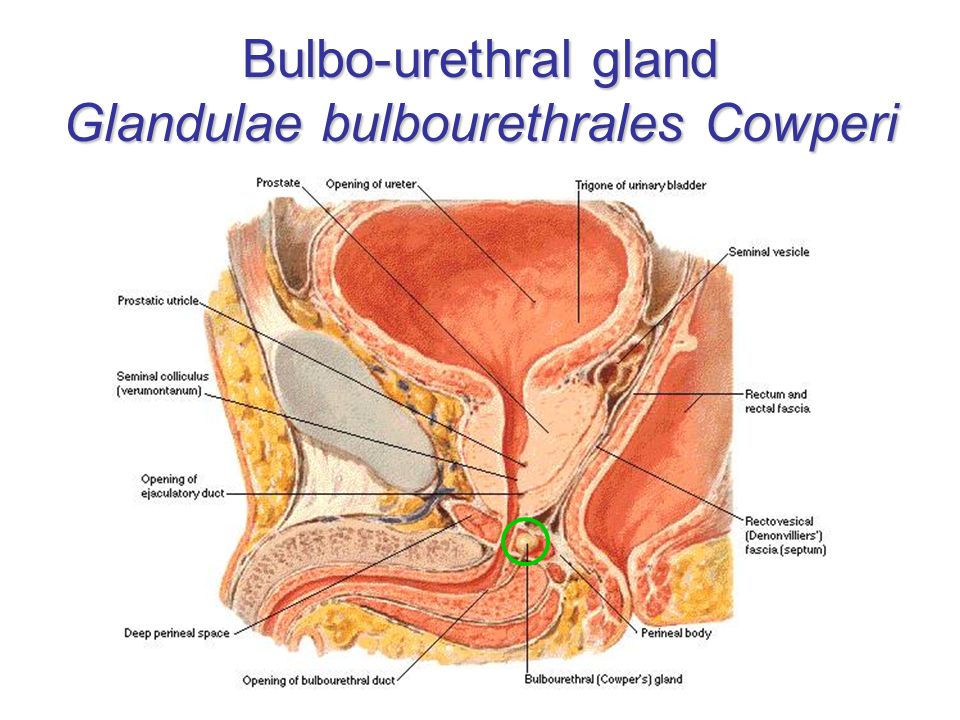 In AJ Wein et al., eds., Campbell-Walsh Urology, 10th ed., vol. 3, pp. 2168–2185. Philadelphia: Saunders.
In AJ Wein et al., eds., Campbell-Walsh Urology, 10th ed., vol. 3, pp. 2168–2185. Philadelphia: Saunders.